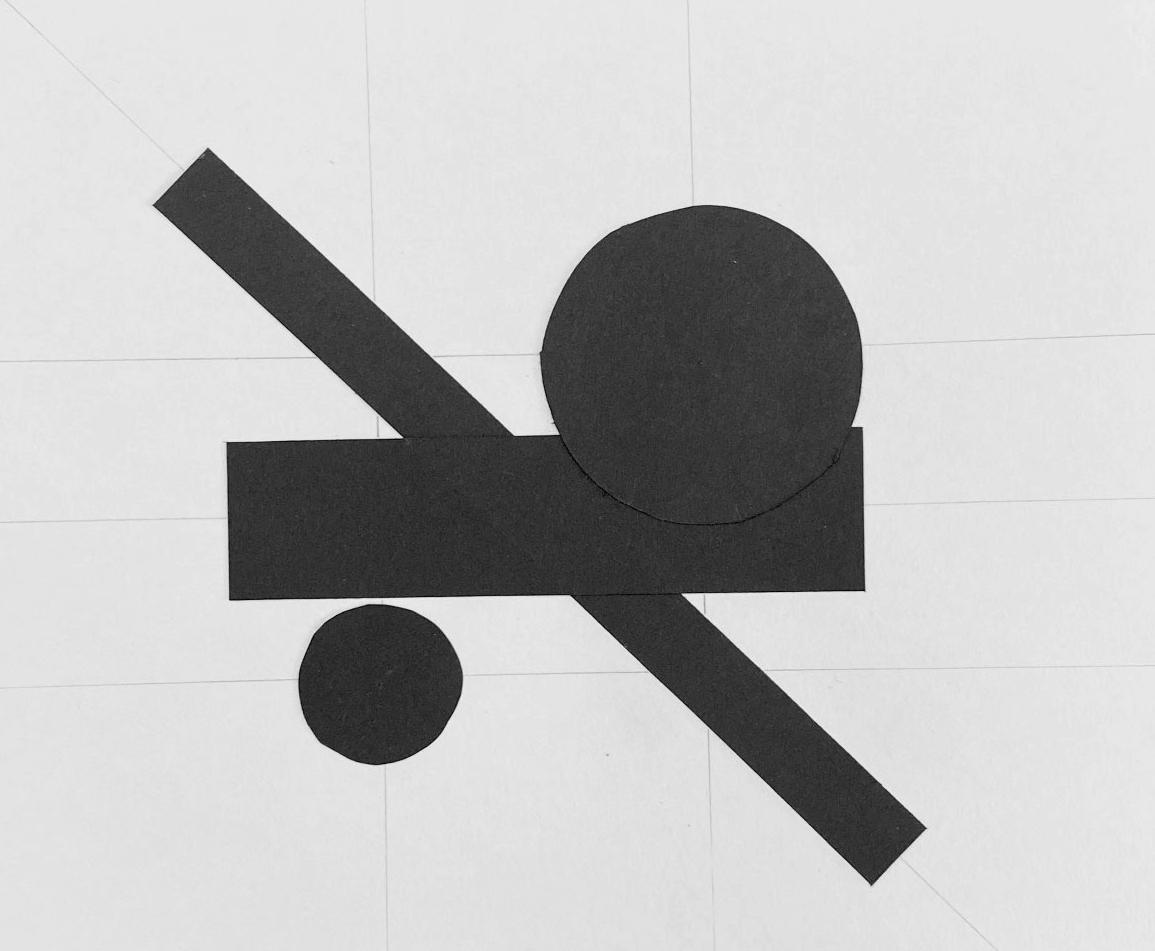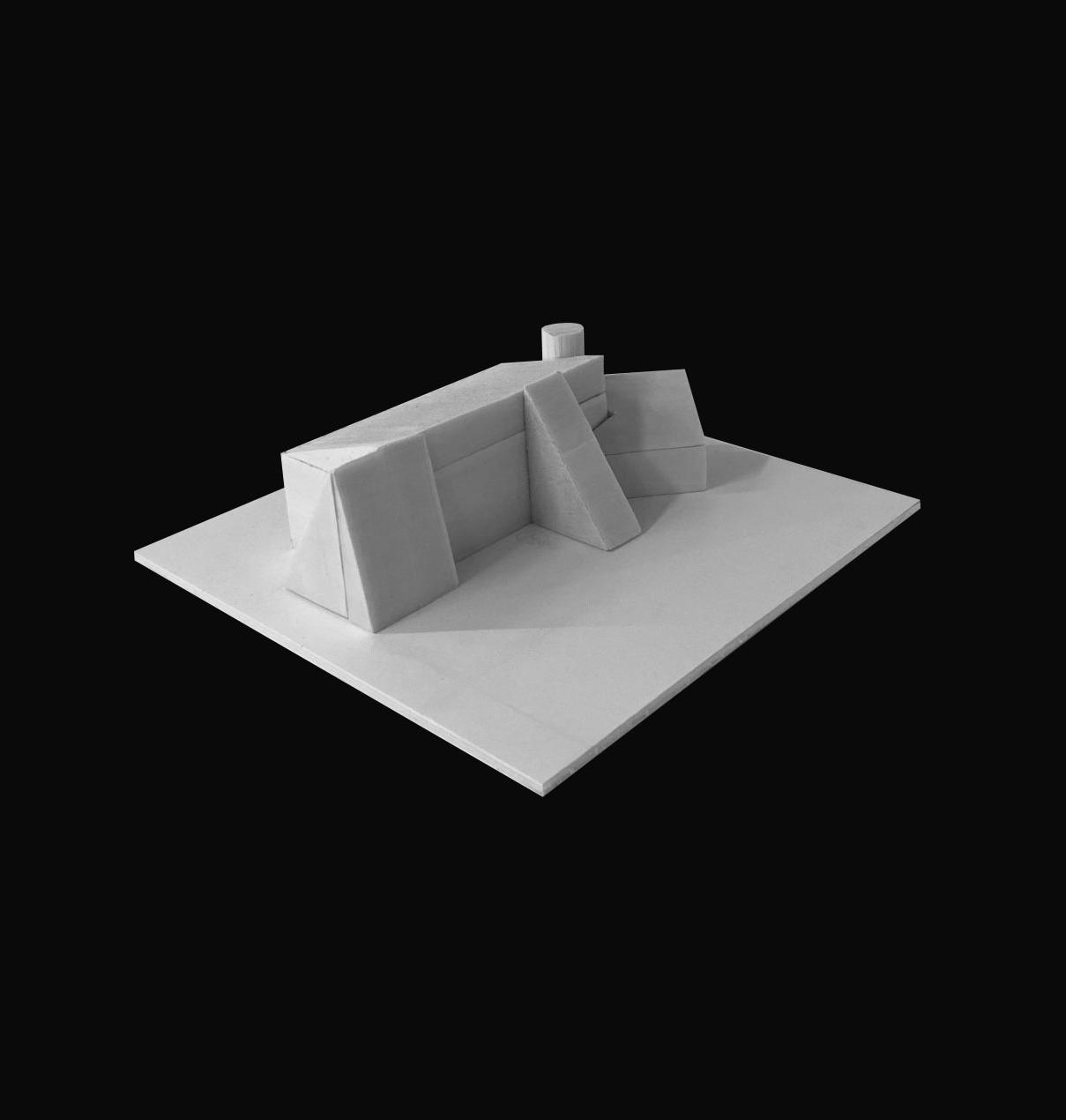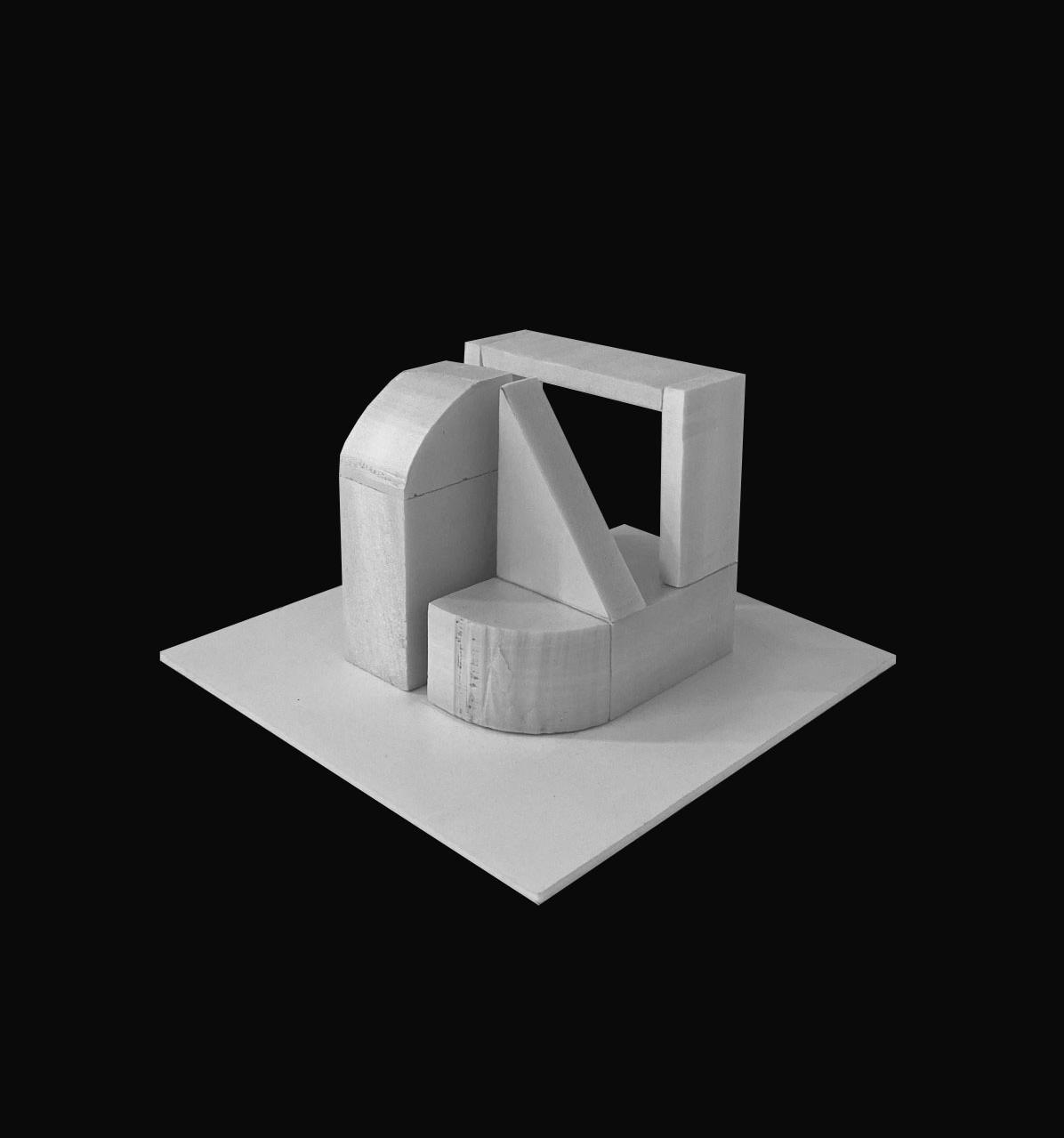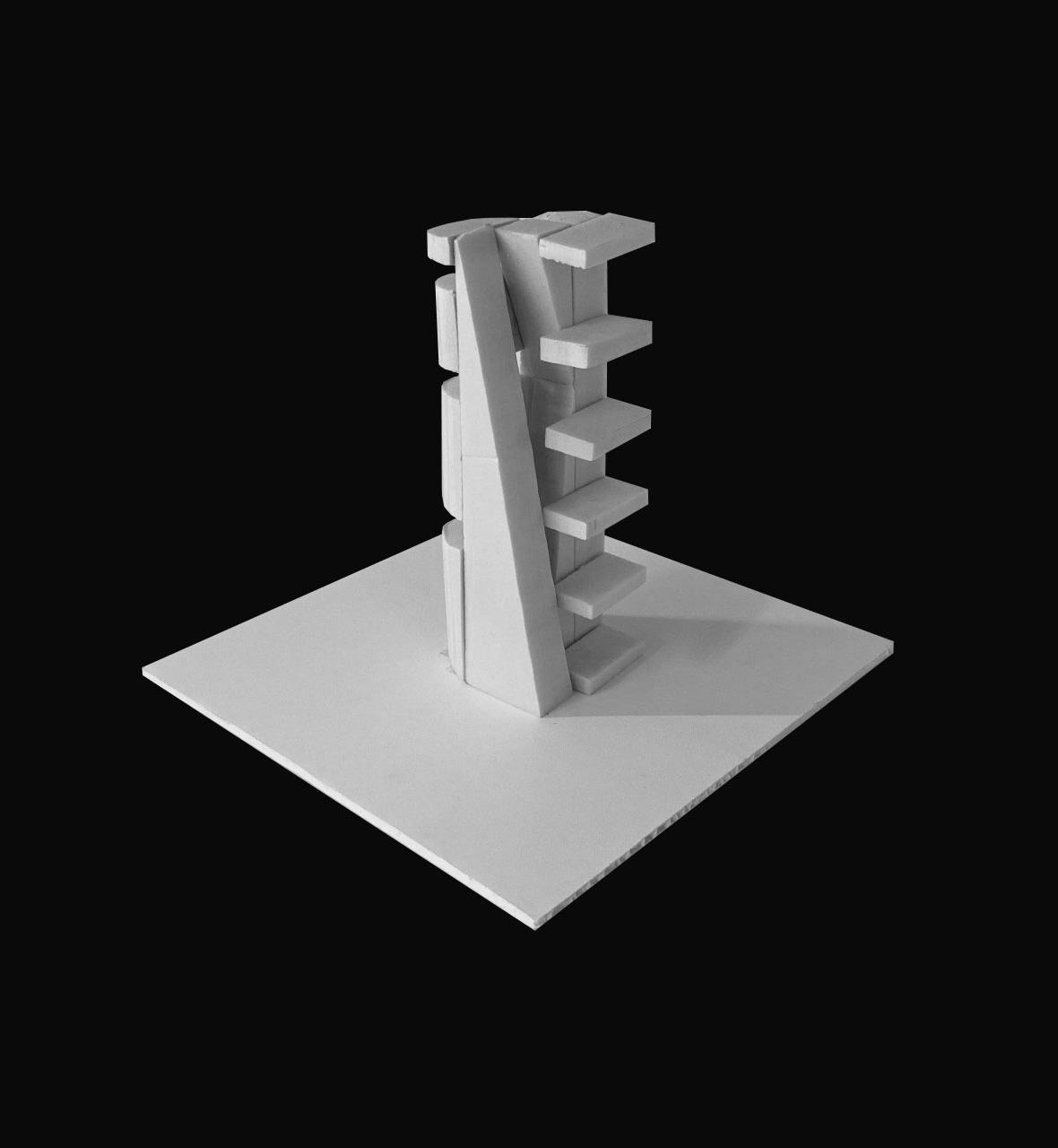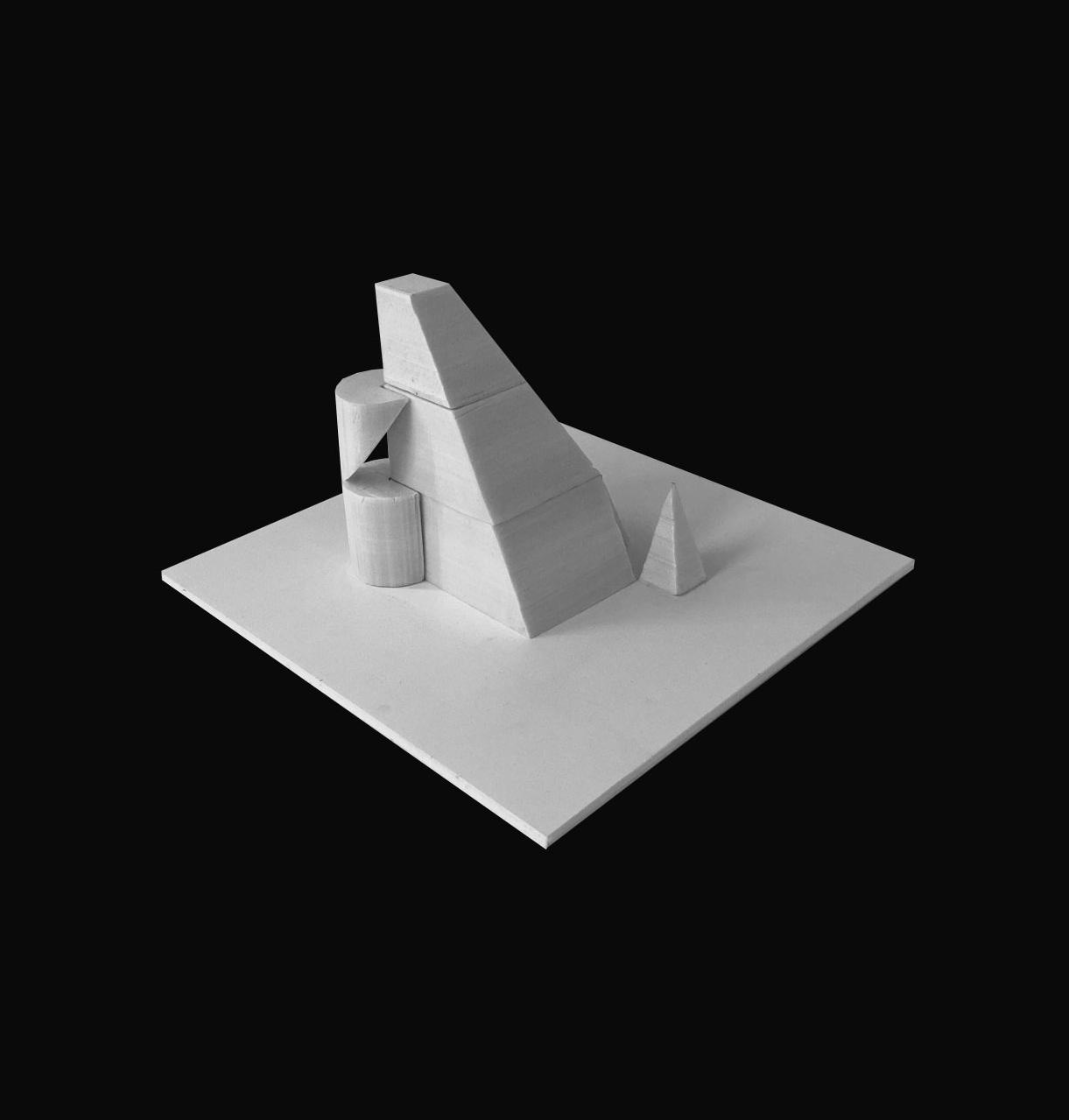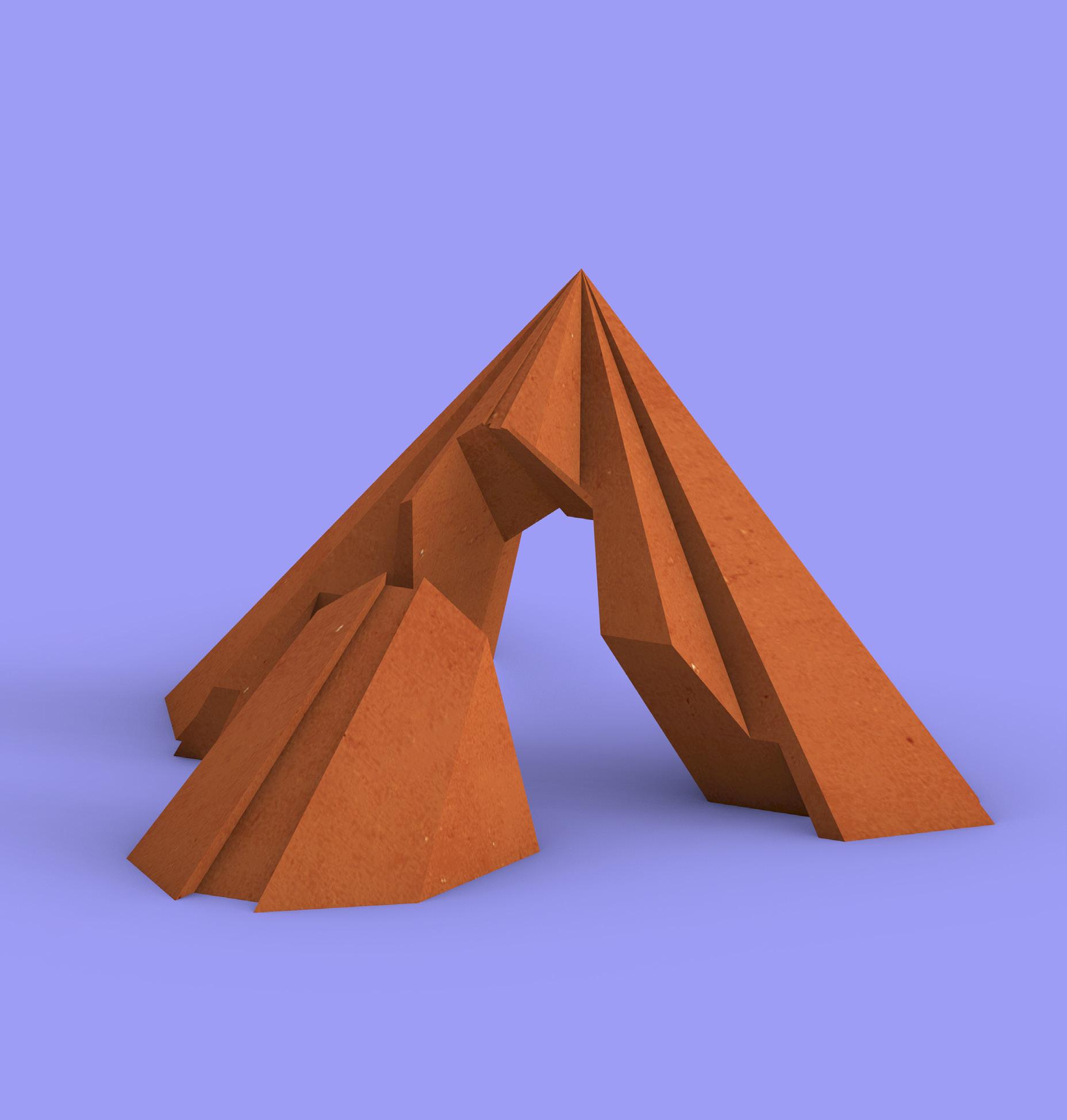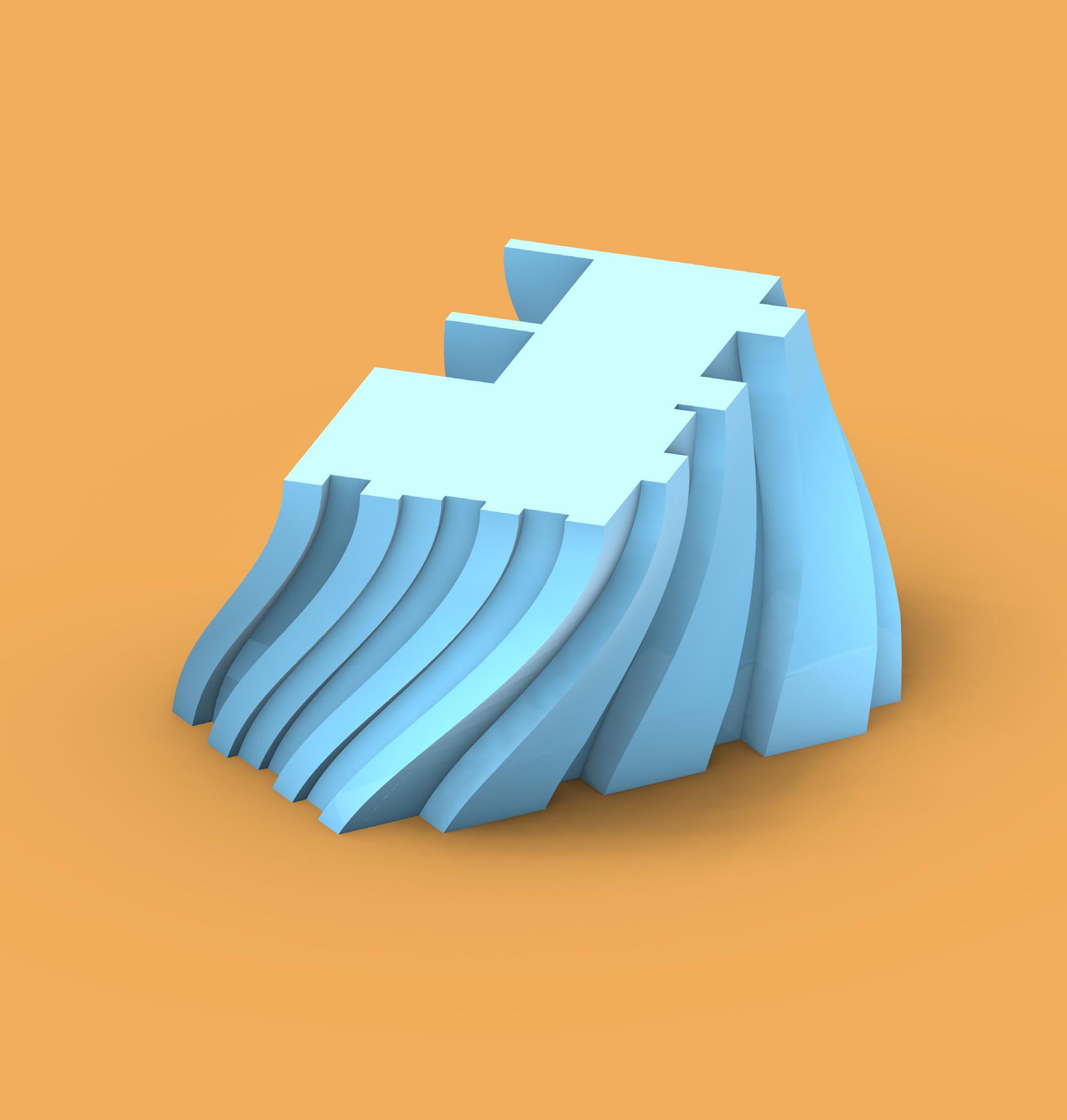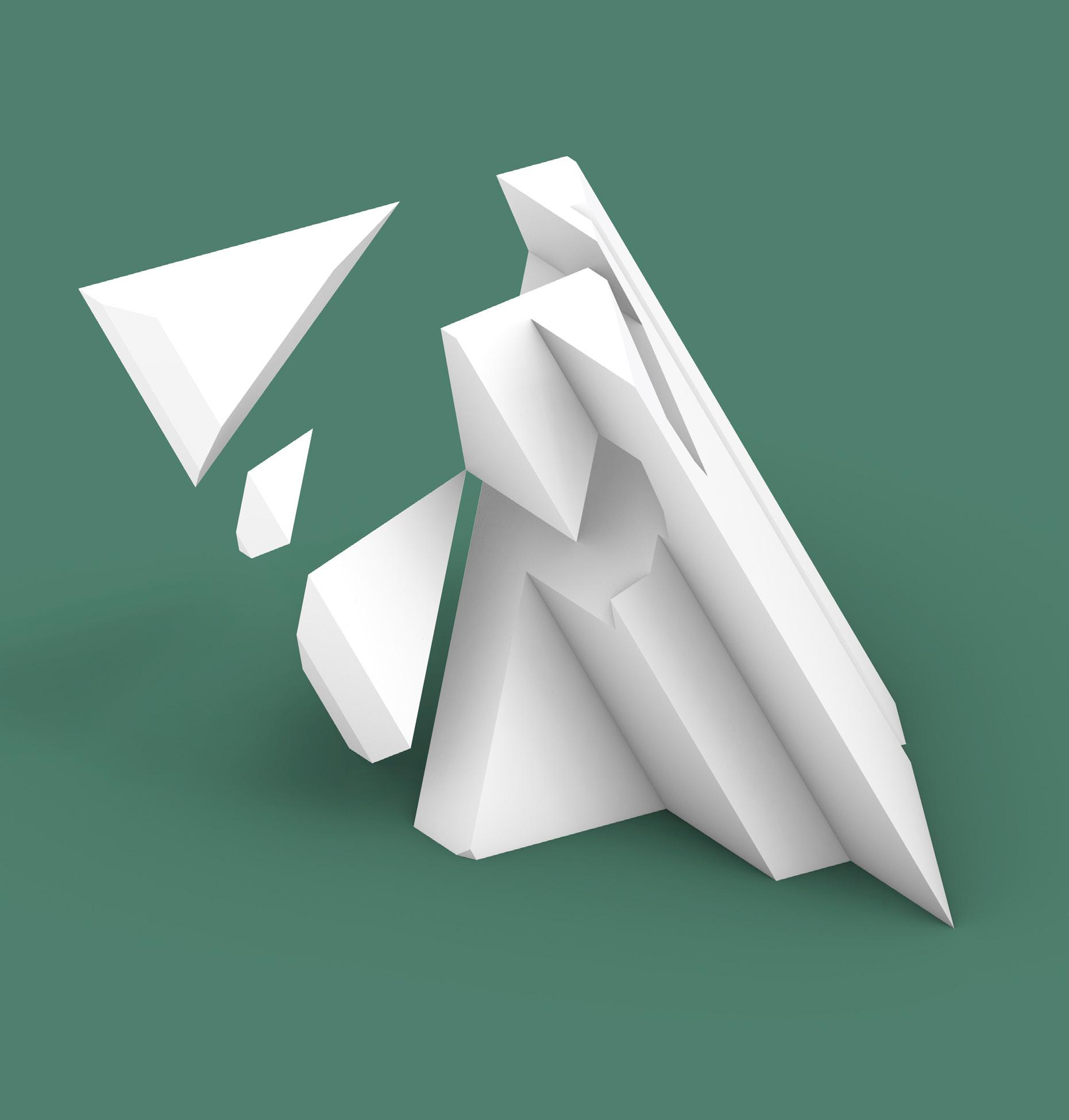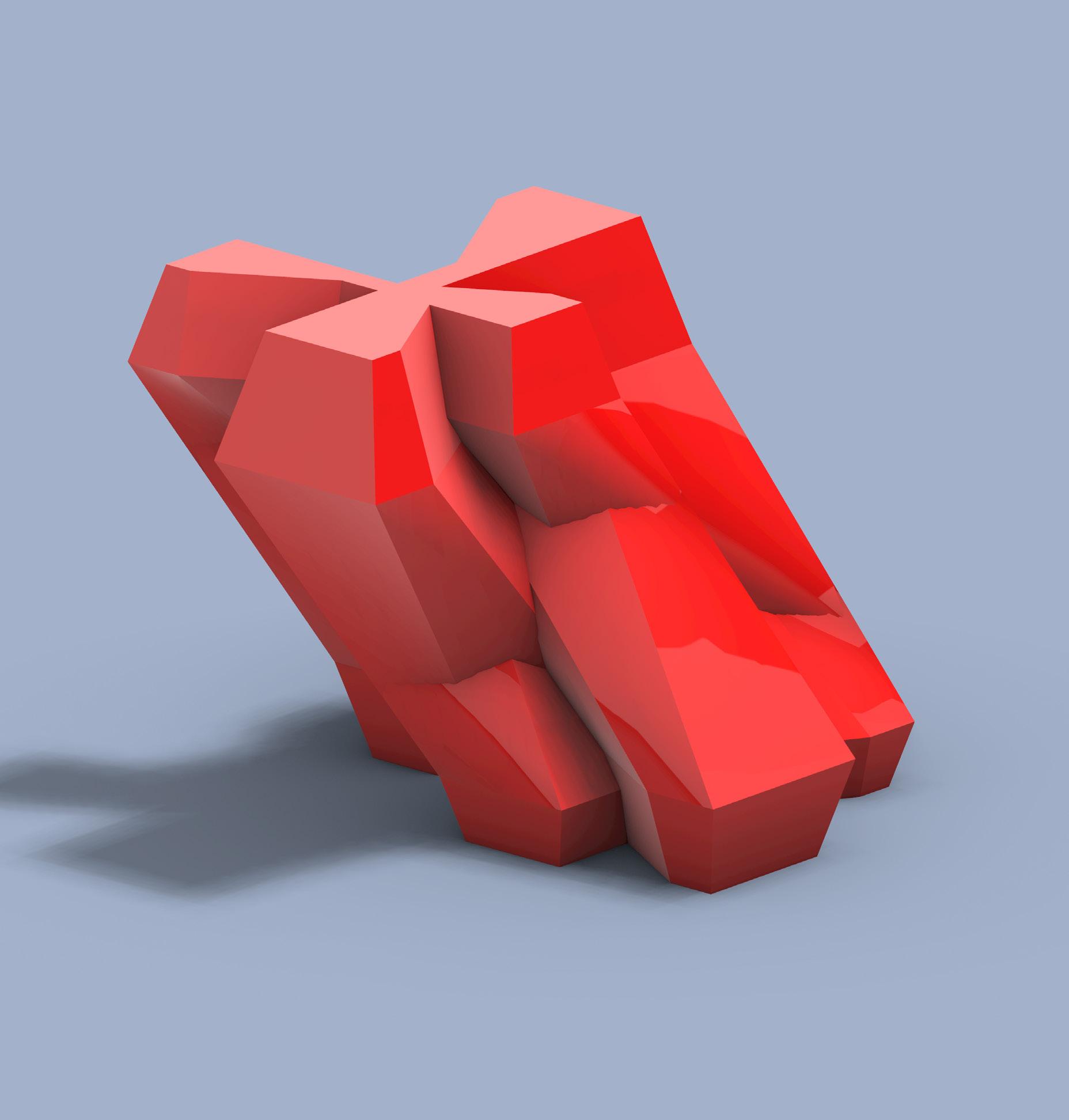PROJECT 01
Exhibition PavilionWith the task of housing a collection of 100 unique ceramic pieces, the design of this pavilion seeks to disconnect the user from the outside environment and encourage them to explore the building in their own way.
The main goals for this design were to highlight the ceramic collection in a variety of ways and provide a sense of user agency. Each room can be experienced in a different way depending on the user’s choice of sequencing, ultimately creating an immersive experience.
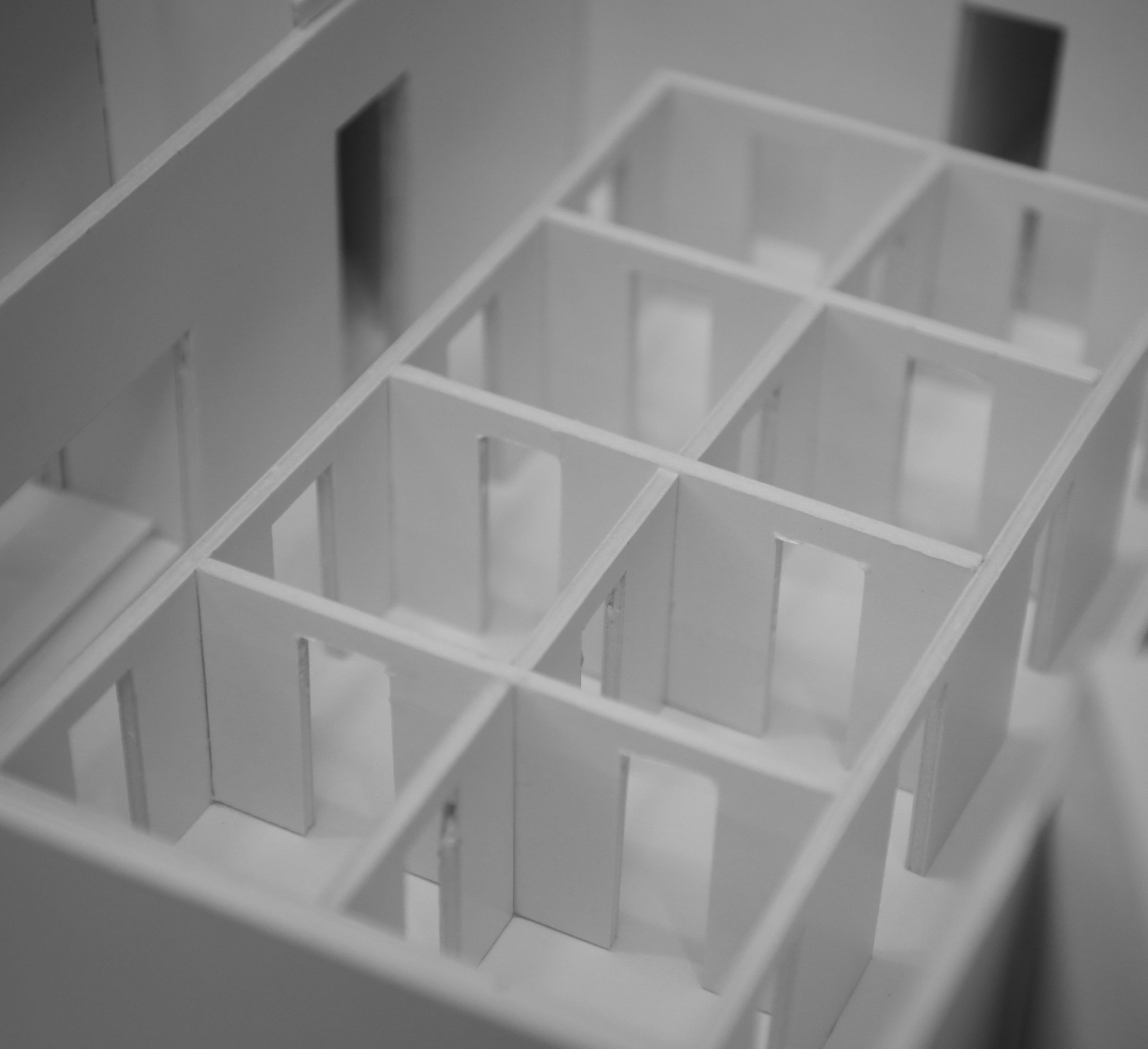


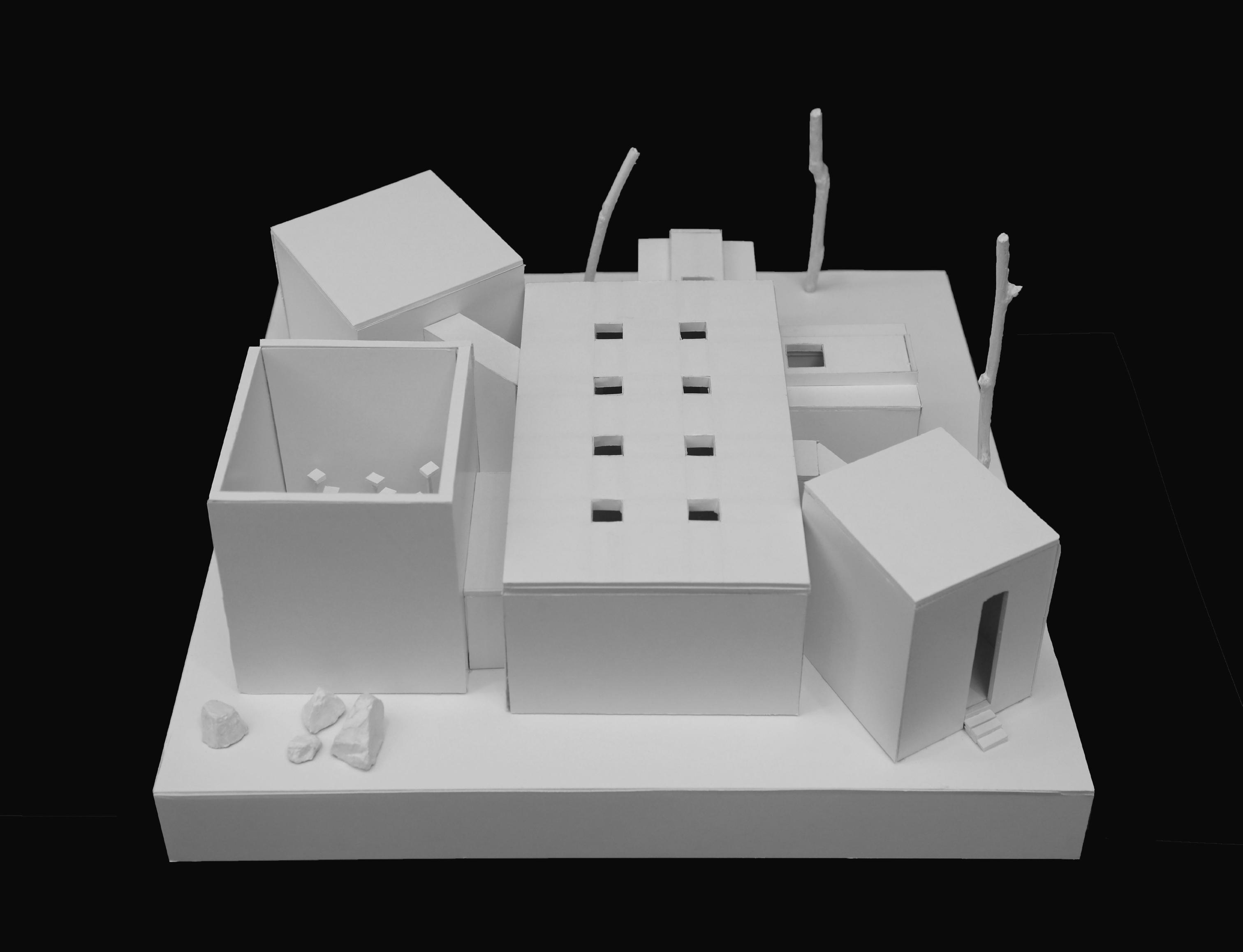
MAIN ROOM
The central grid acts as the main circulation element of the pavilion and is designed to mimic a “room within a room”. When traversing the space, users flow through the central grid and discover the side rooms.
Each interior room is 8’ x 8’ and houses 5 ceramics. When approaching the interior grid from the entrance room, users are met with a solid wall rather than an opening. This initiates the user agency, as people are given a choice of direction right from the start.
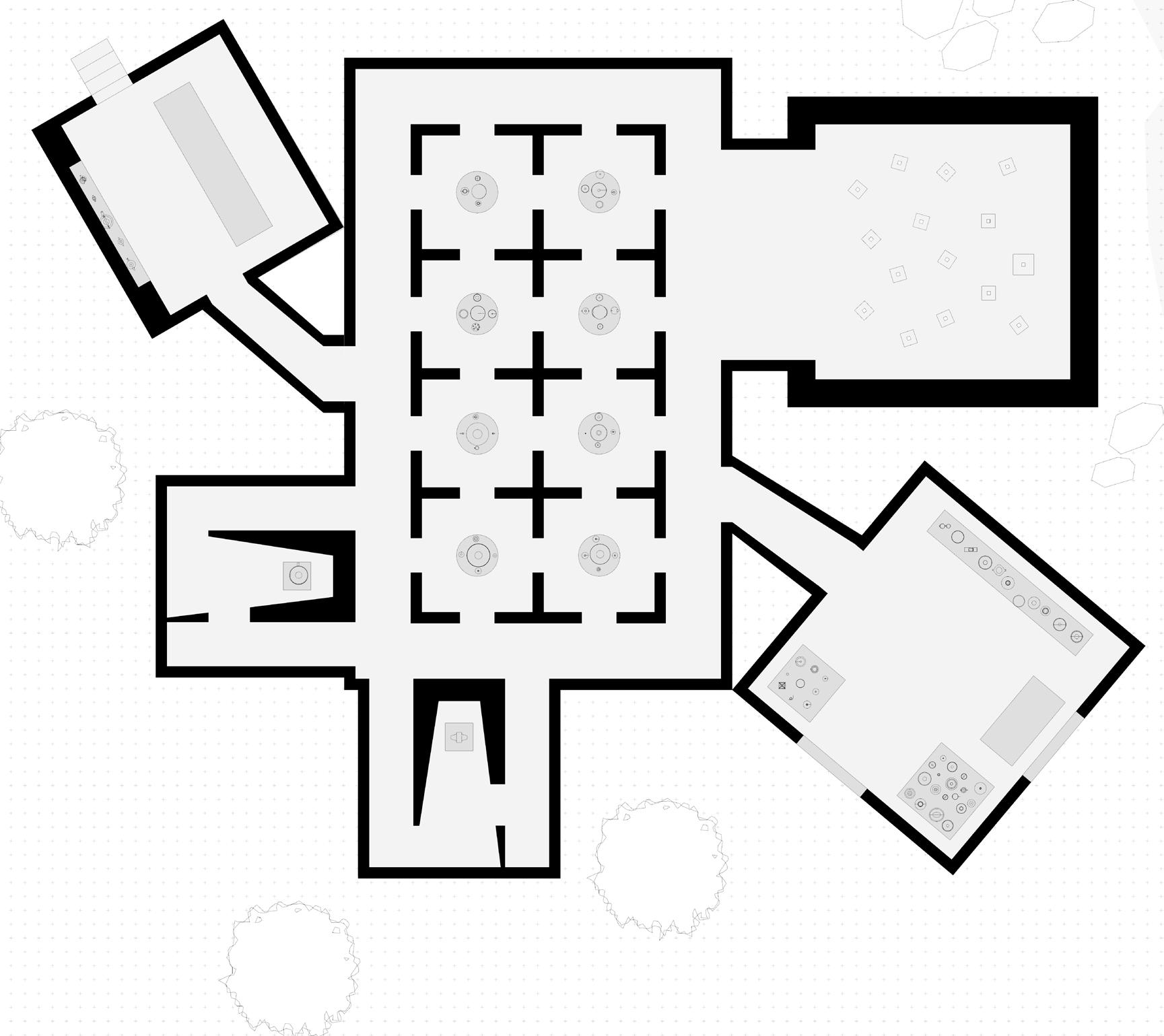
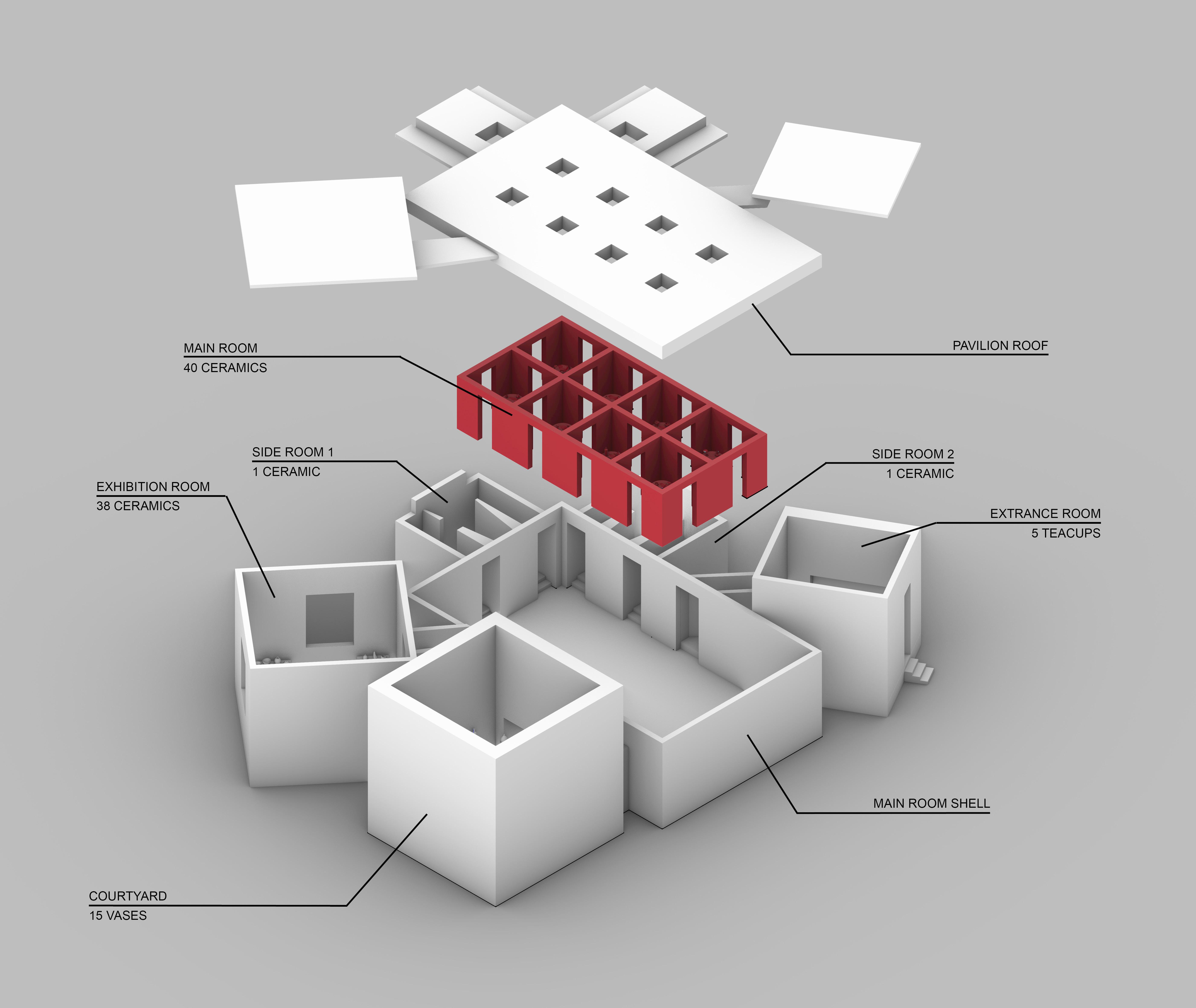
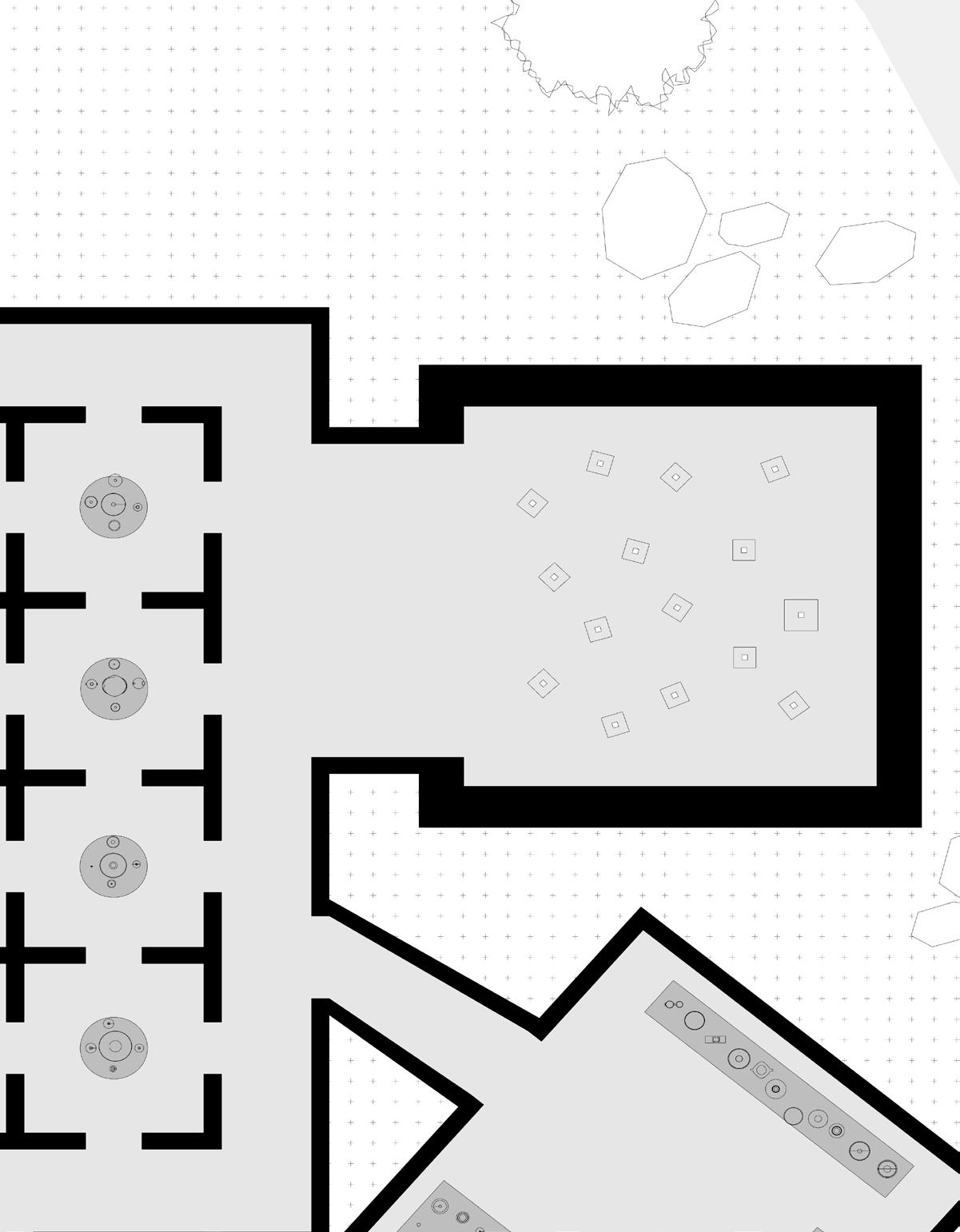
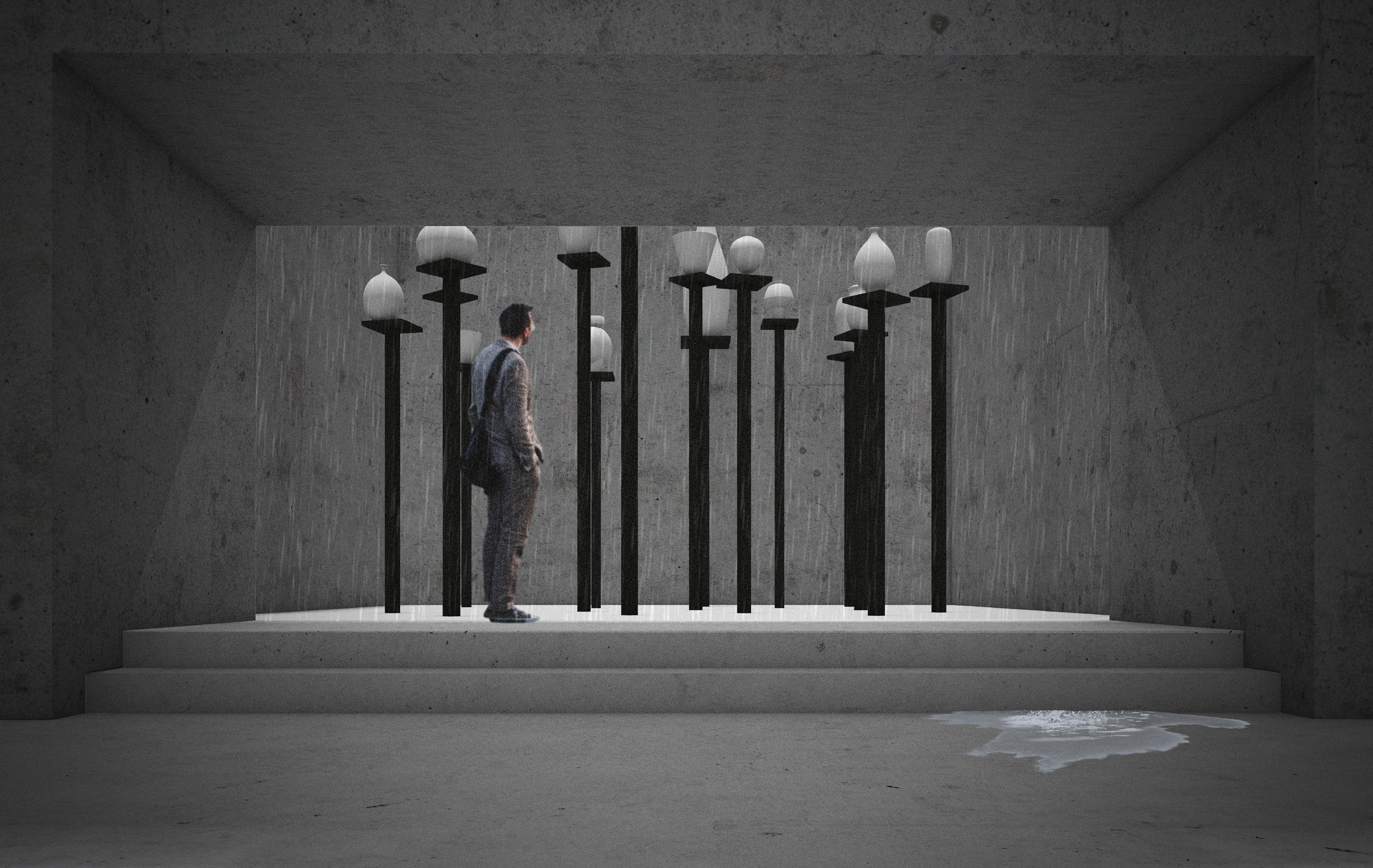
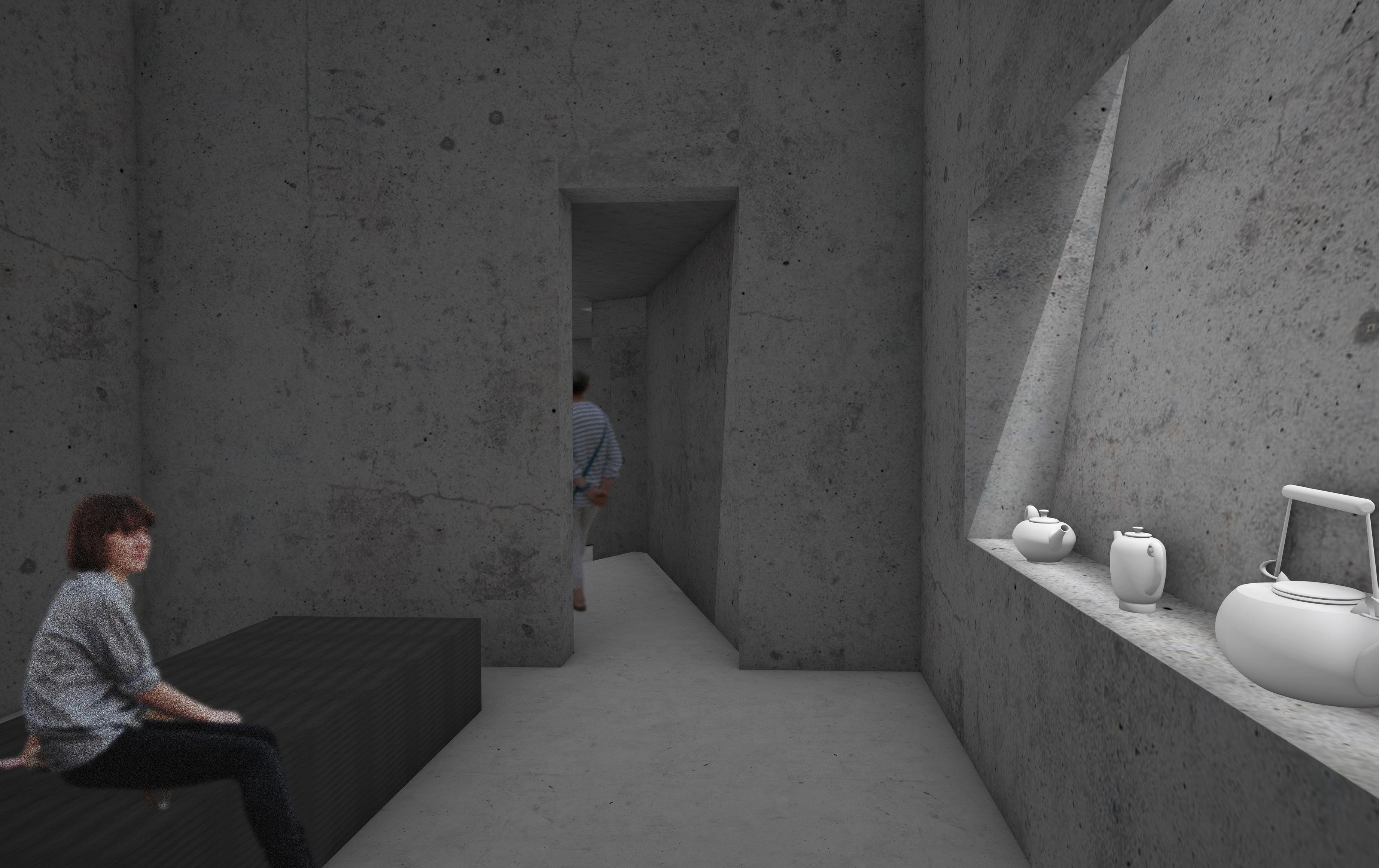
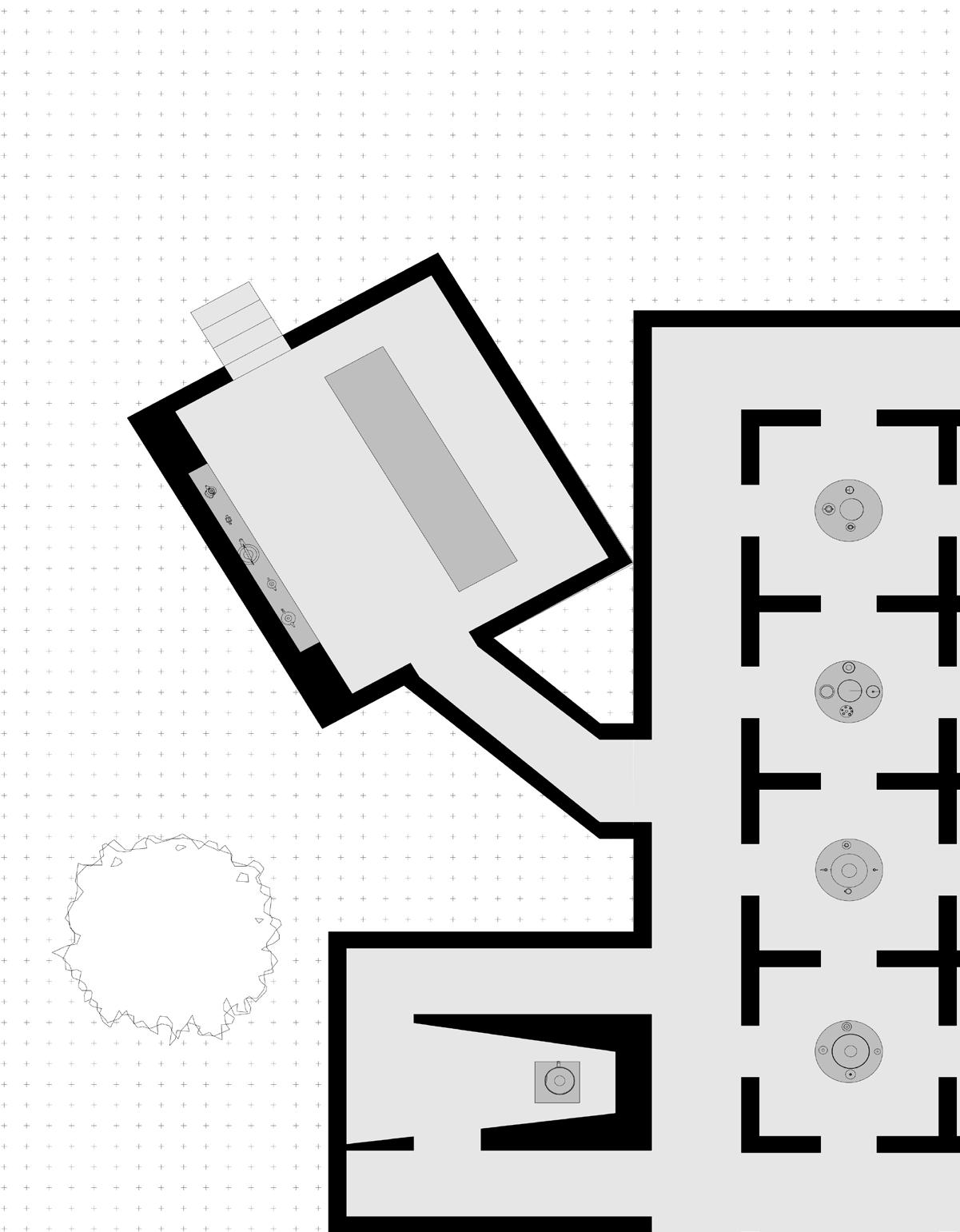
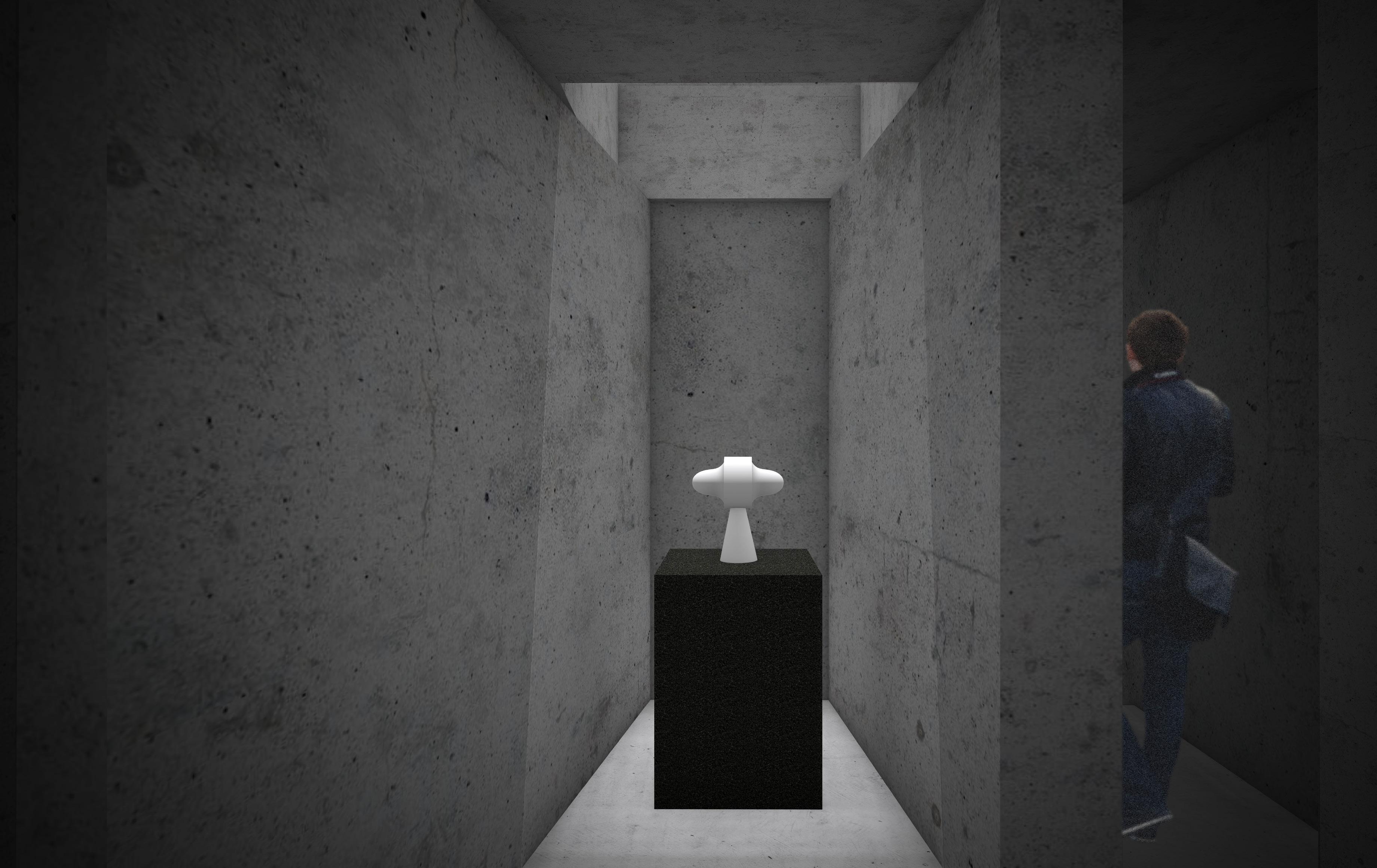
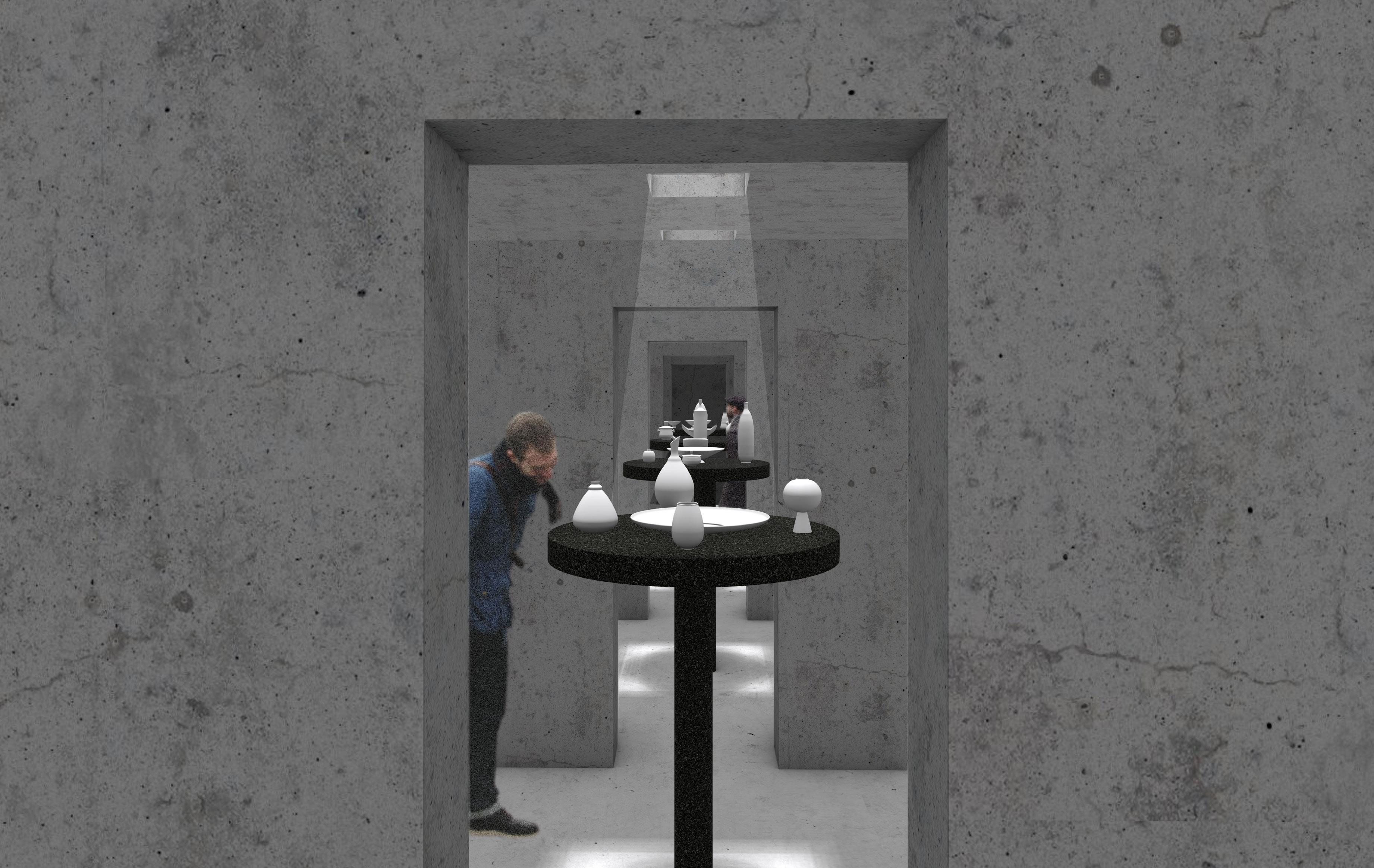
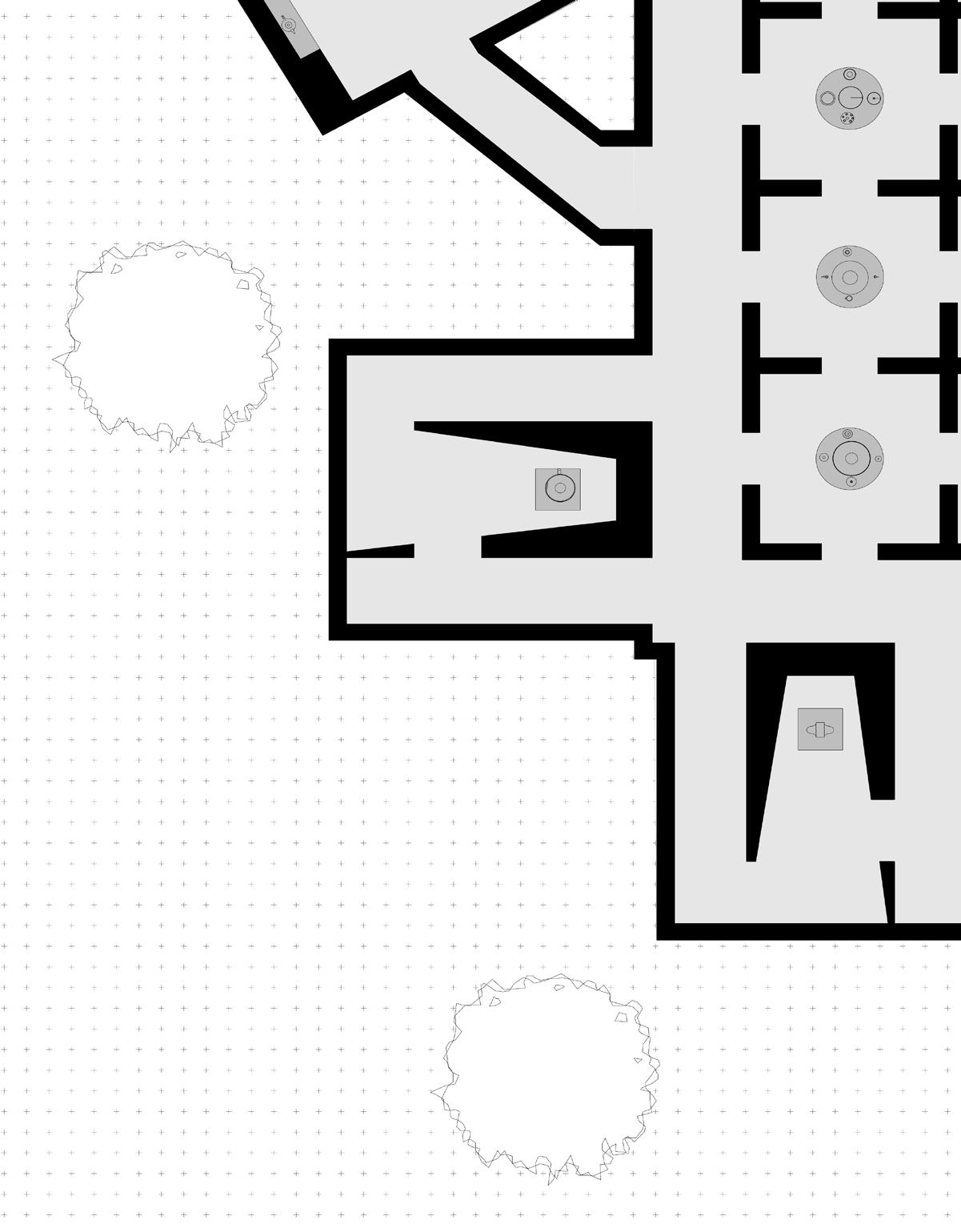
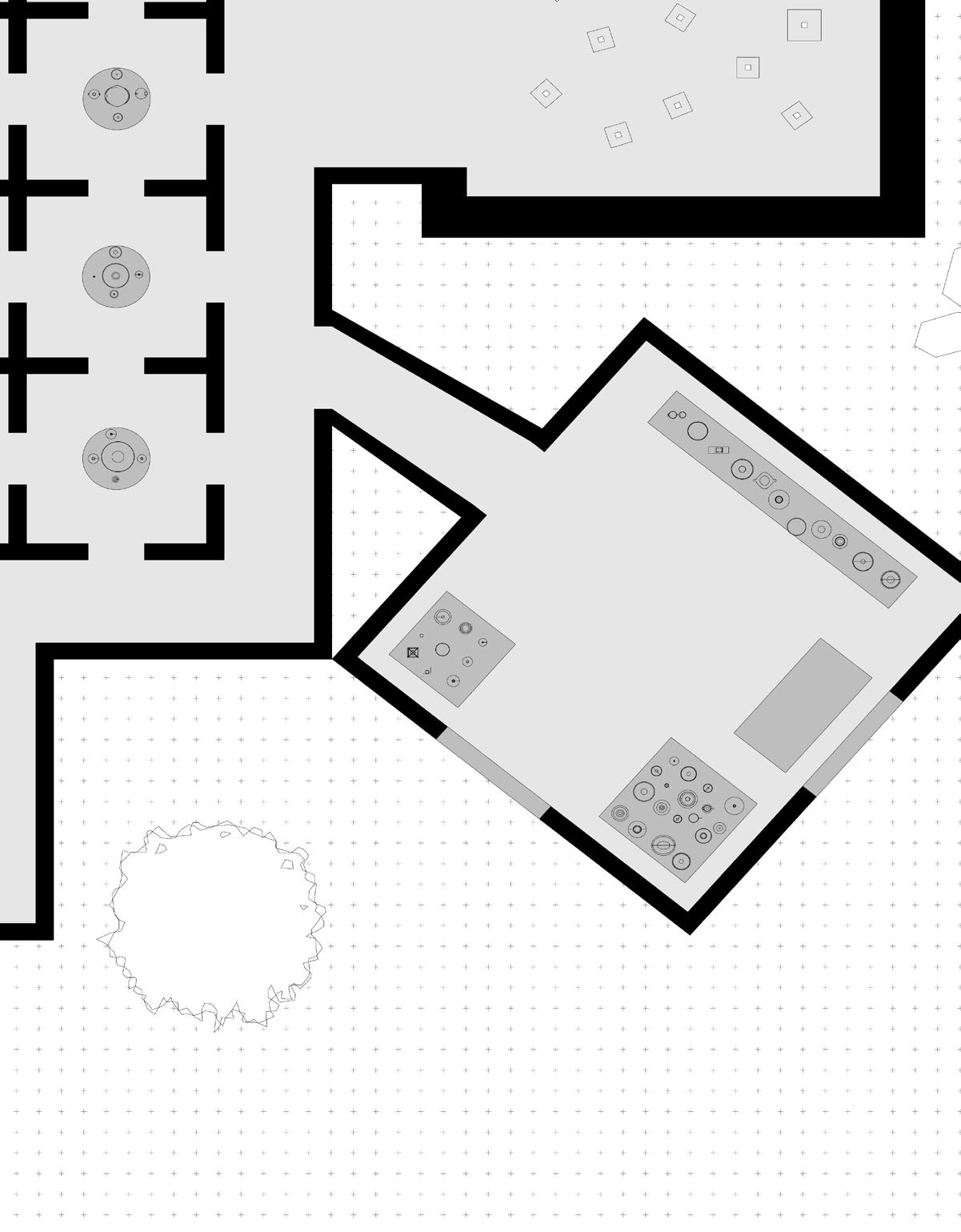
EXERCISE 01
THE ANIMATE INANIMATE
This exercise focuses on describing an object and its movement. I chose to work with my wallet, as the opening action provided a wide range of motion, which showcased the object’s inner geometry
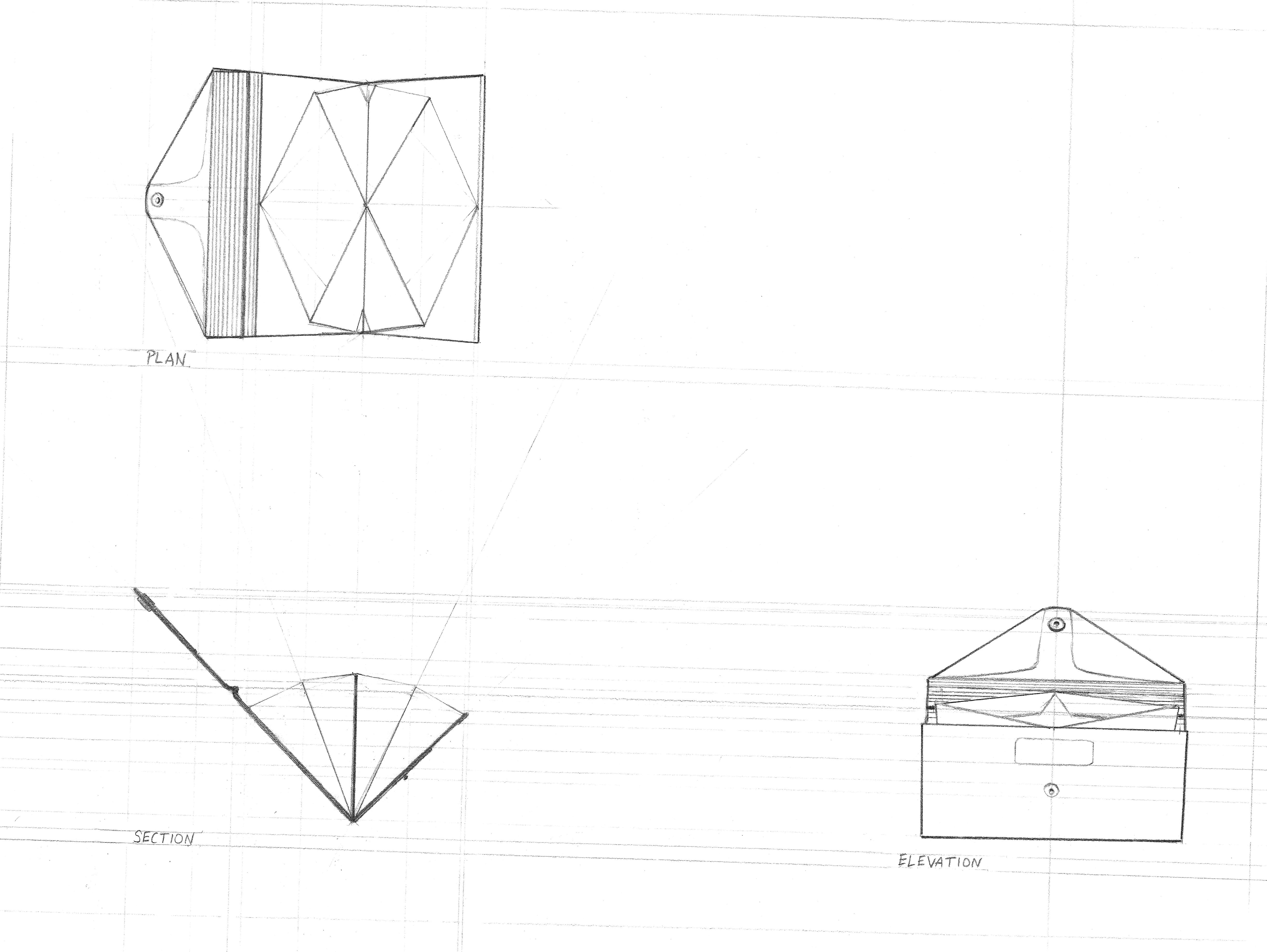
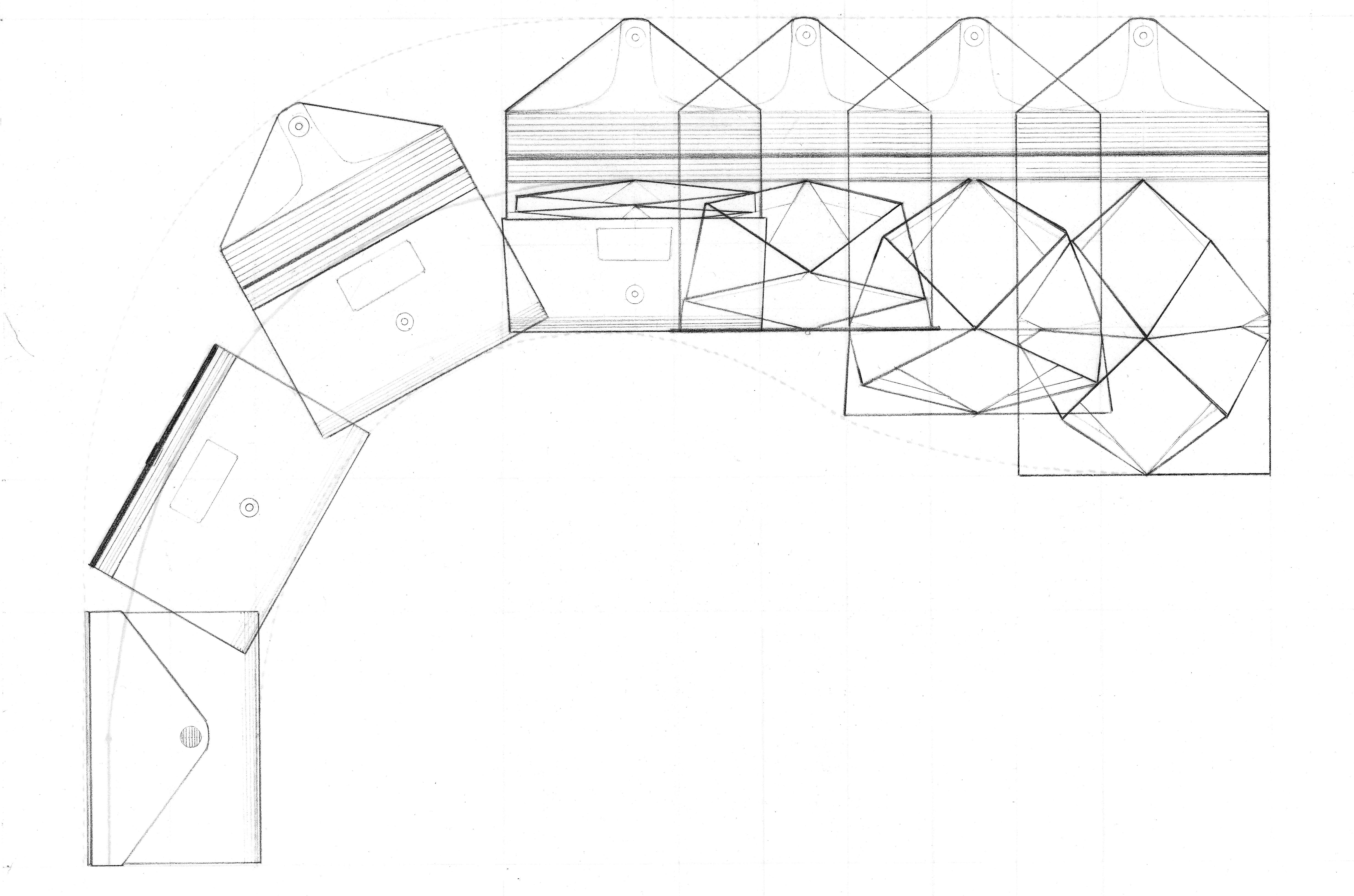
EXERCISE 02
MAPPING SPACE
With the goal of emphasizing spacial mapping, this exercise explores the transition from a 2D pattern to a 3D design. When sketching early iterations of my design, I focused heavily on creating a balance between positive and negative space in order to ensure that no one element would have an overpowering hierarchy over an other. I also experimented with different unfolded layouts of my cube, as well as various rule sets for the line that split it into sections.
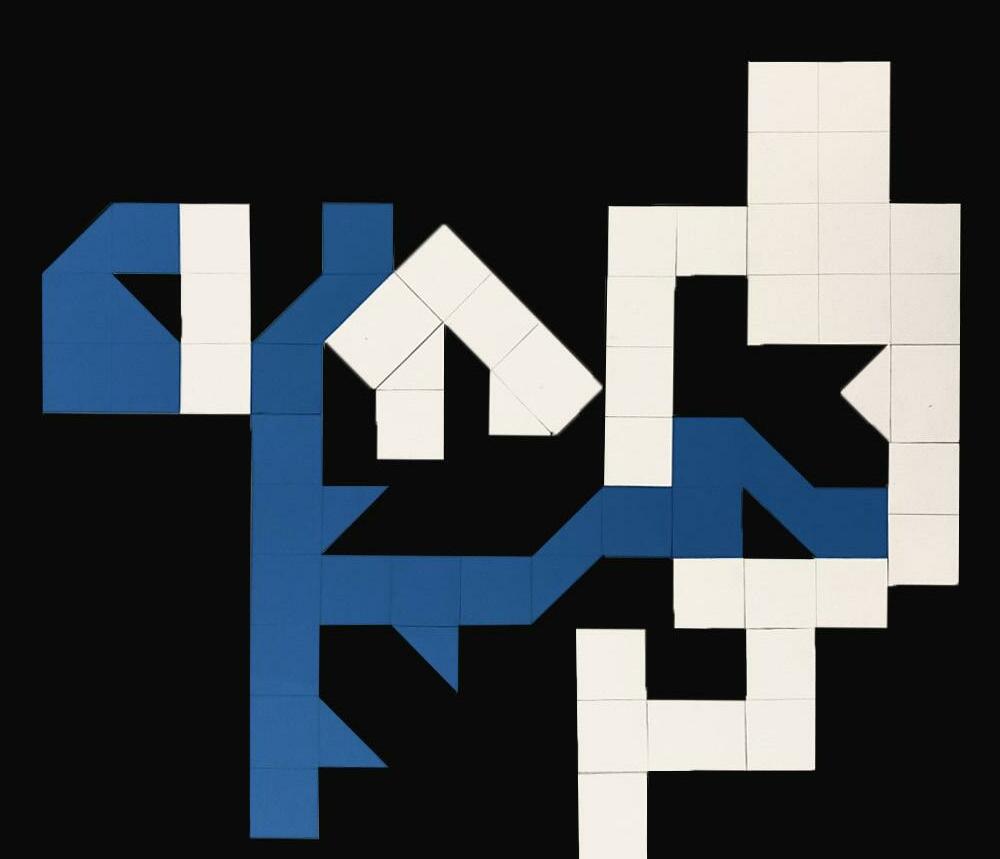
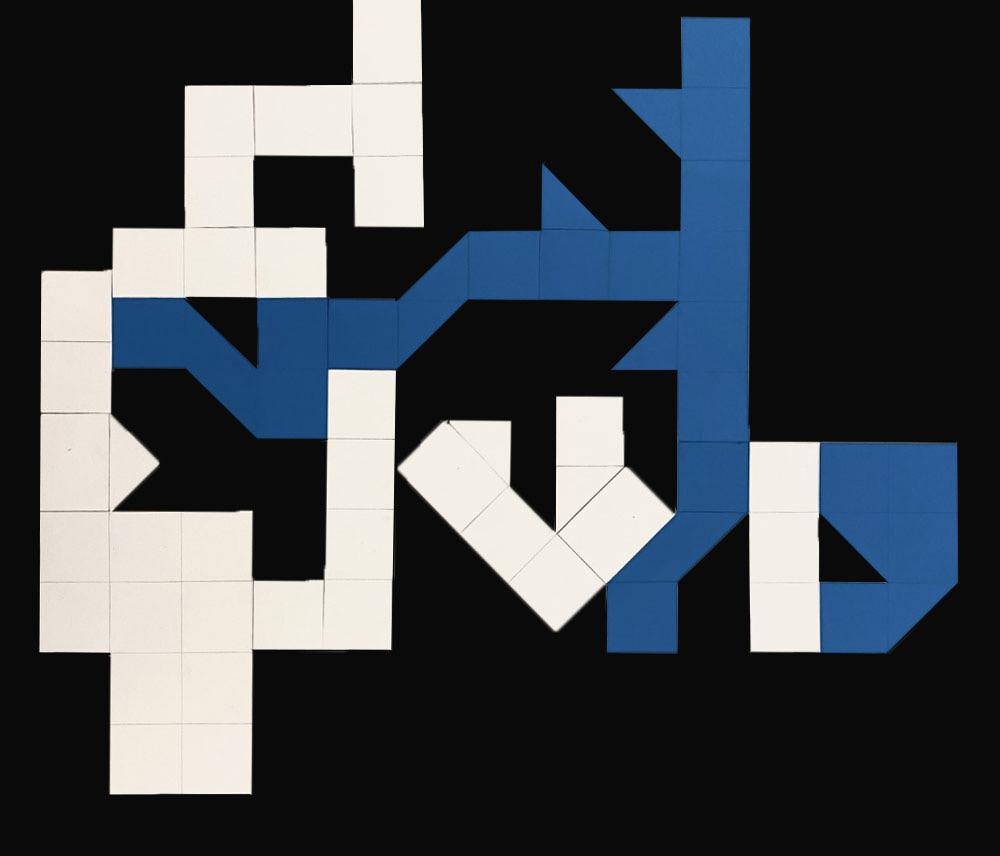
CUBE DIAGRAMS
UNROLLED AND AXON DRAWINGS
The line that generates the cube’s positive and negative space follows a constant rule. The path starts with a diagonal line segment, followed by three straight line segments. In each cube face, the line must cross diagonally through the center before continuing onto the next face of the cube.
I was drawn to this rule set because the 3D form it generated emphasized the depth of the object and utilized multiple layers. This was particularly interesting to me, as it reminded me of a maze-like structure that could be explored, with the voids of the cube acting as entrances.
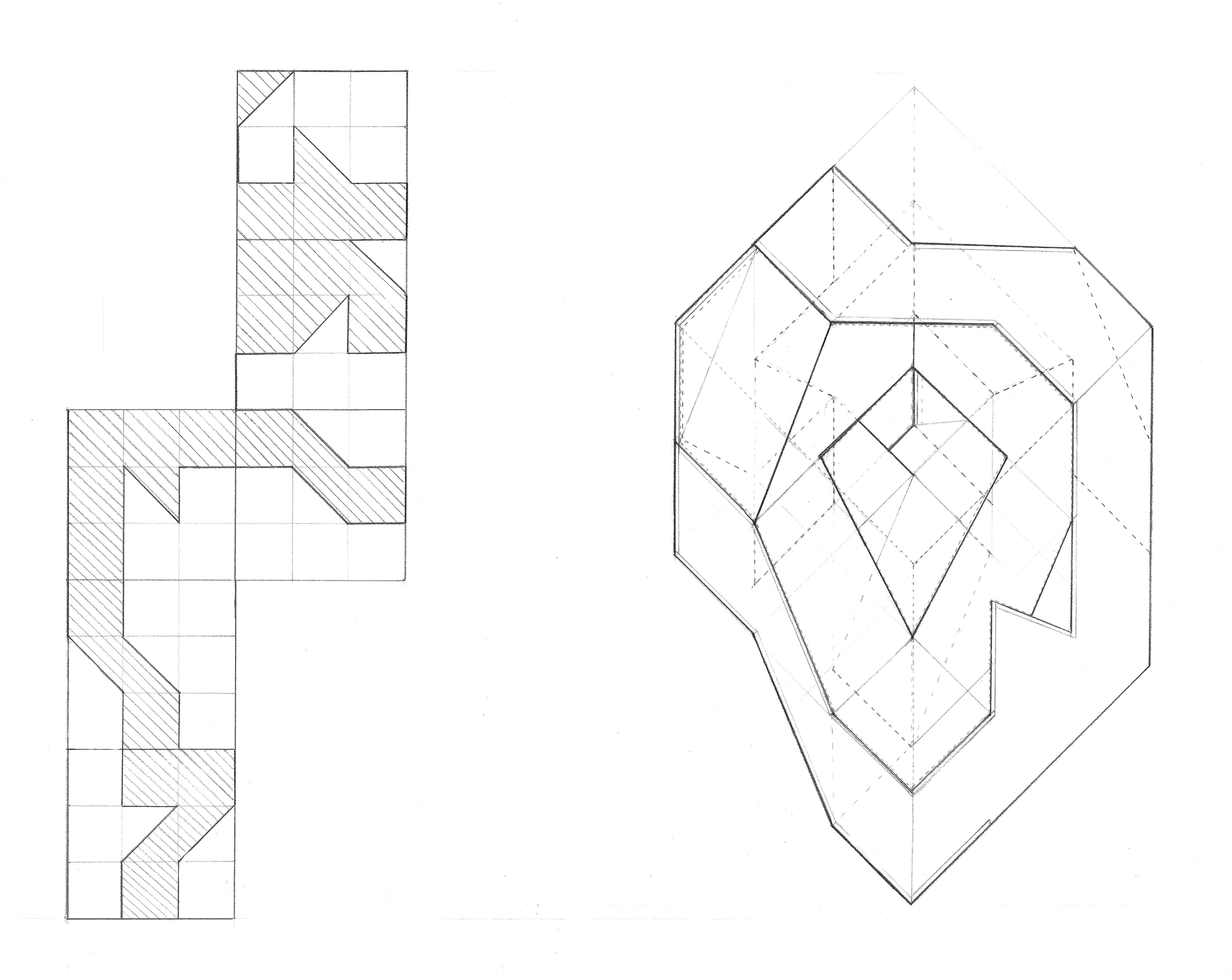
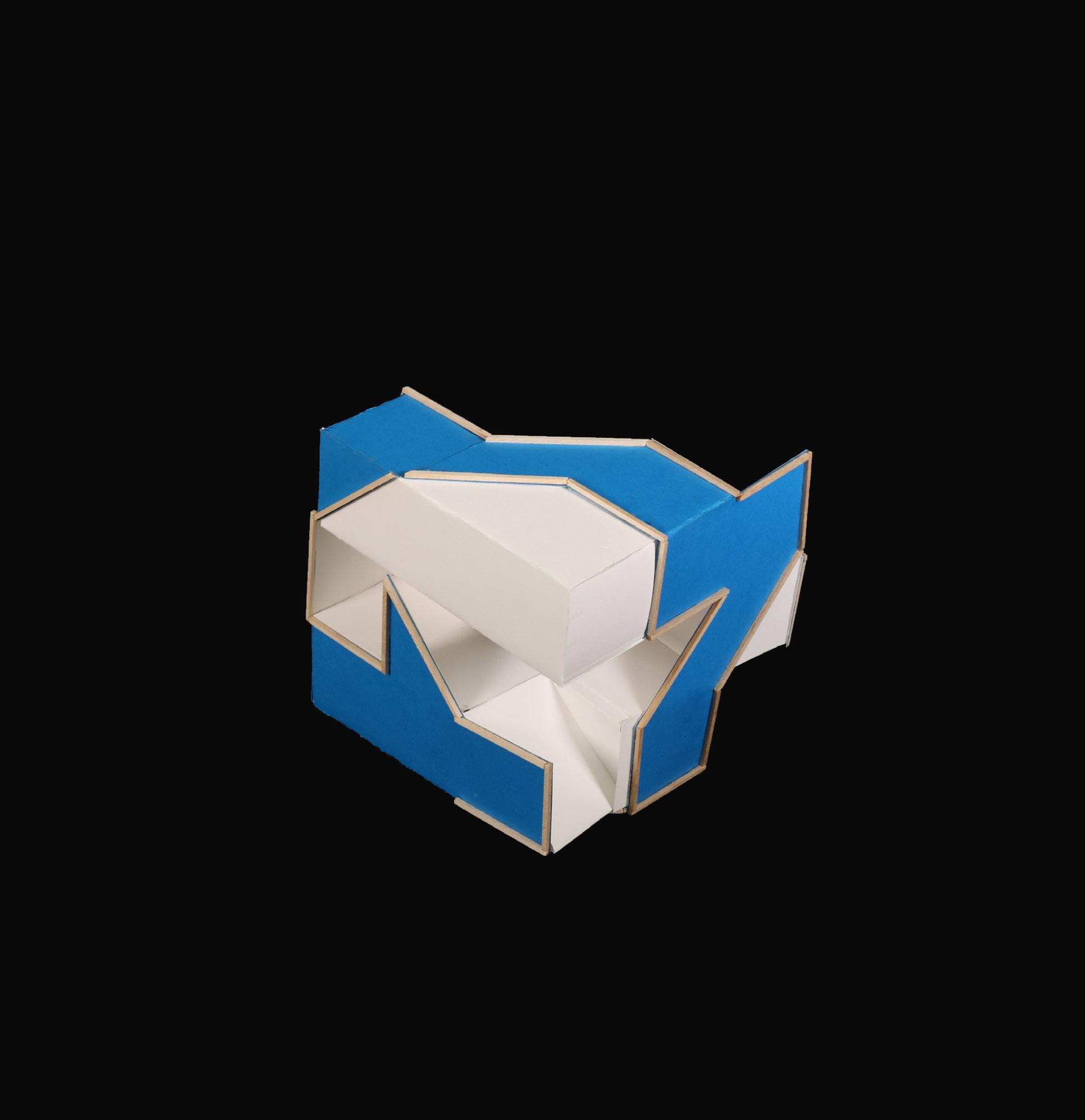


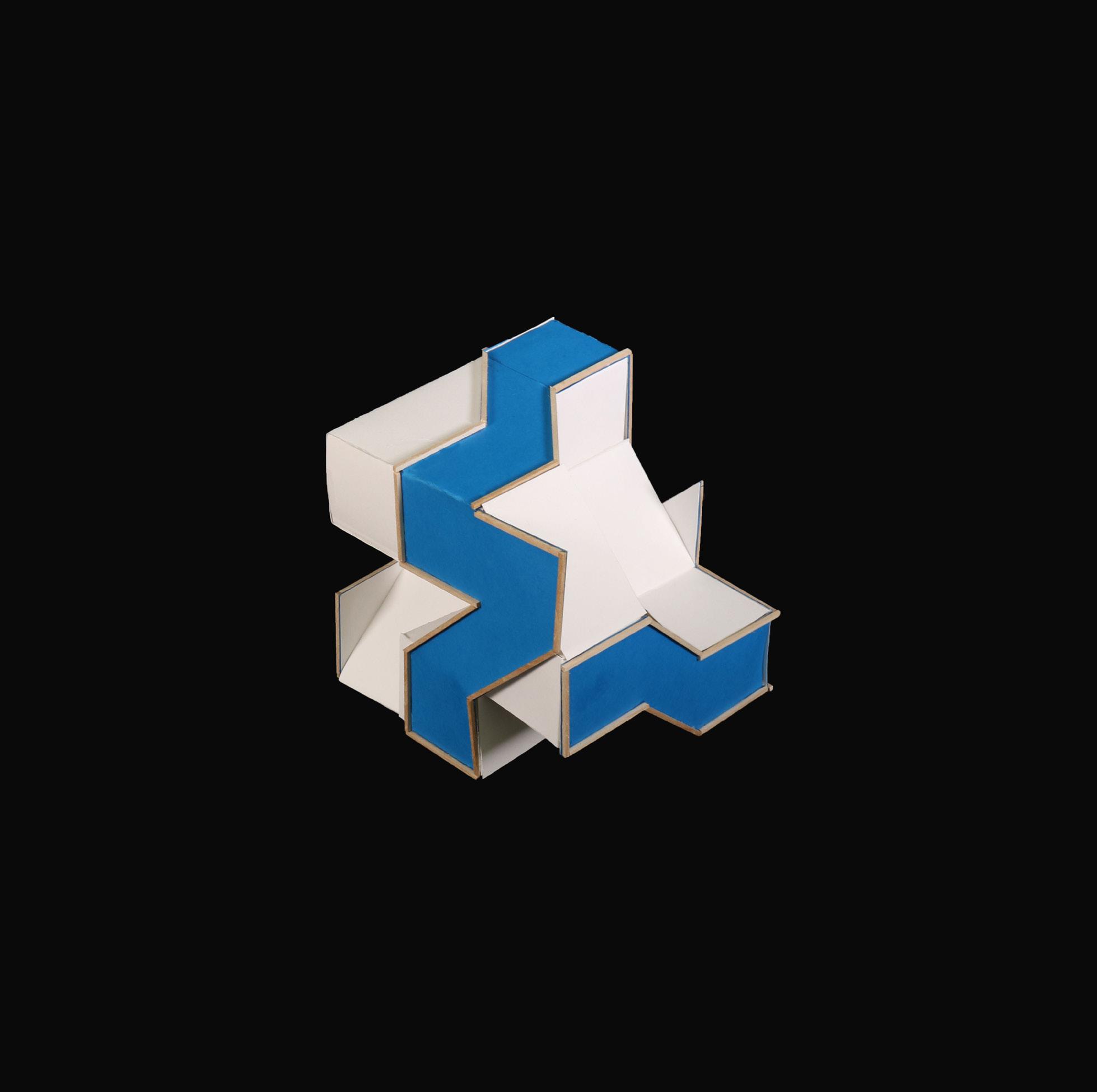
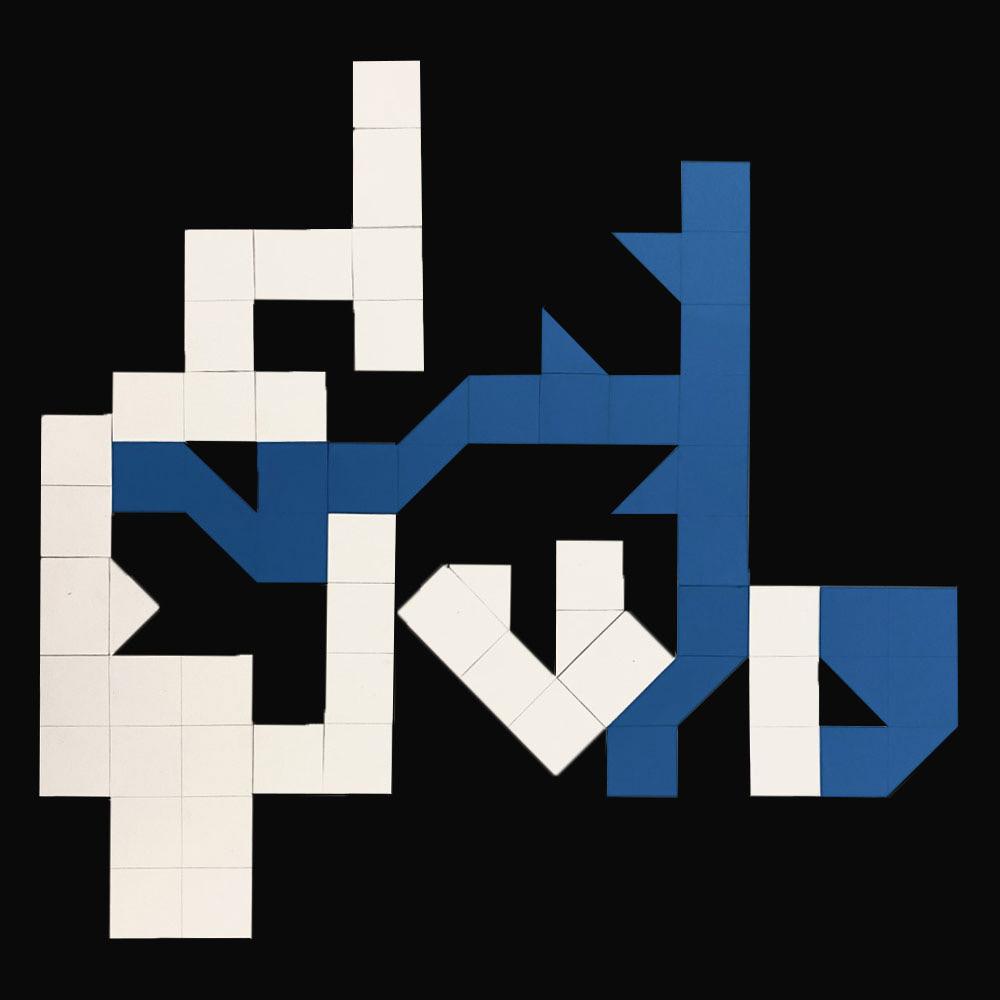
EXERCISE 03
FIGURE AND FORM
The following pieces seek to explore how operations and rule sets can transform standard shapes into more organic figures. Each operation aims to work with the figure as a whole, rather than individual components.
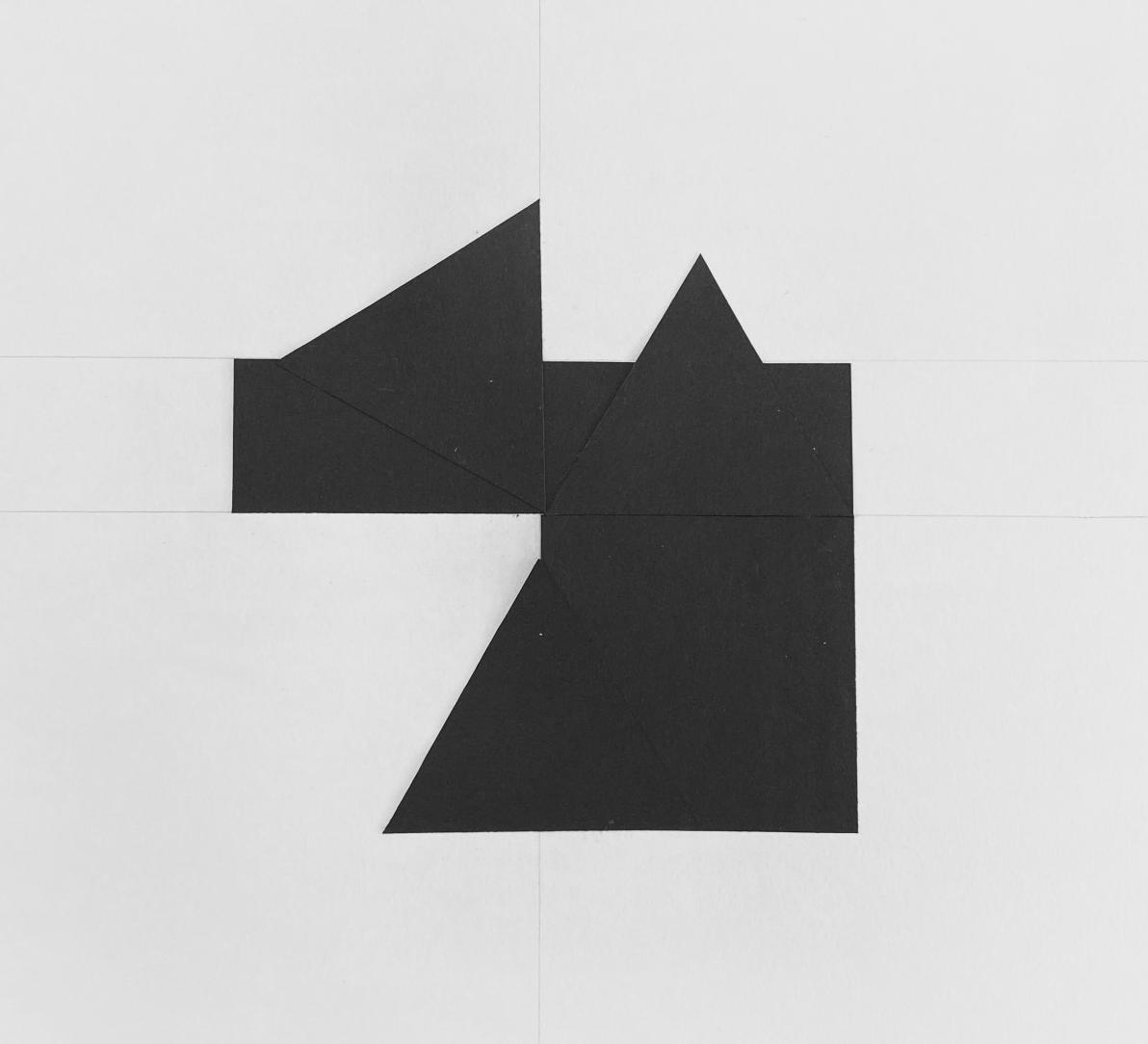
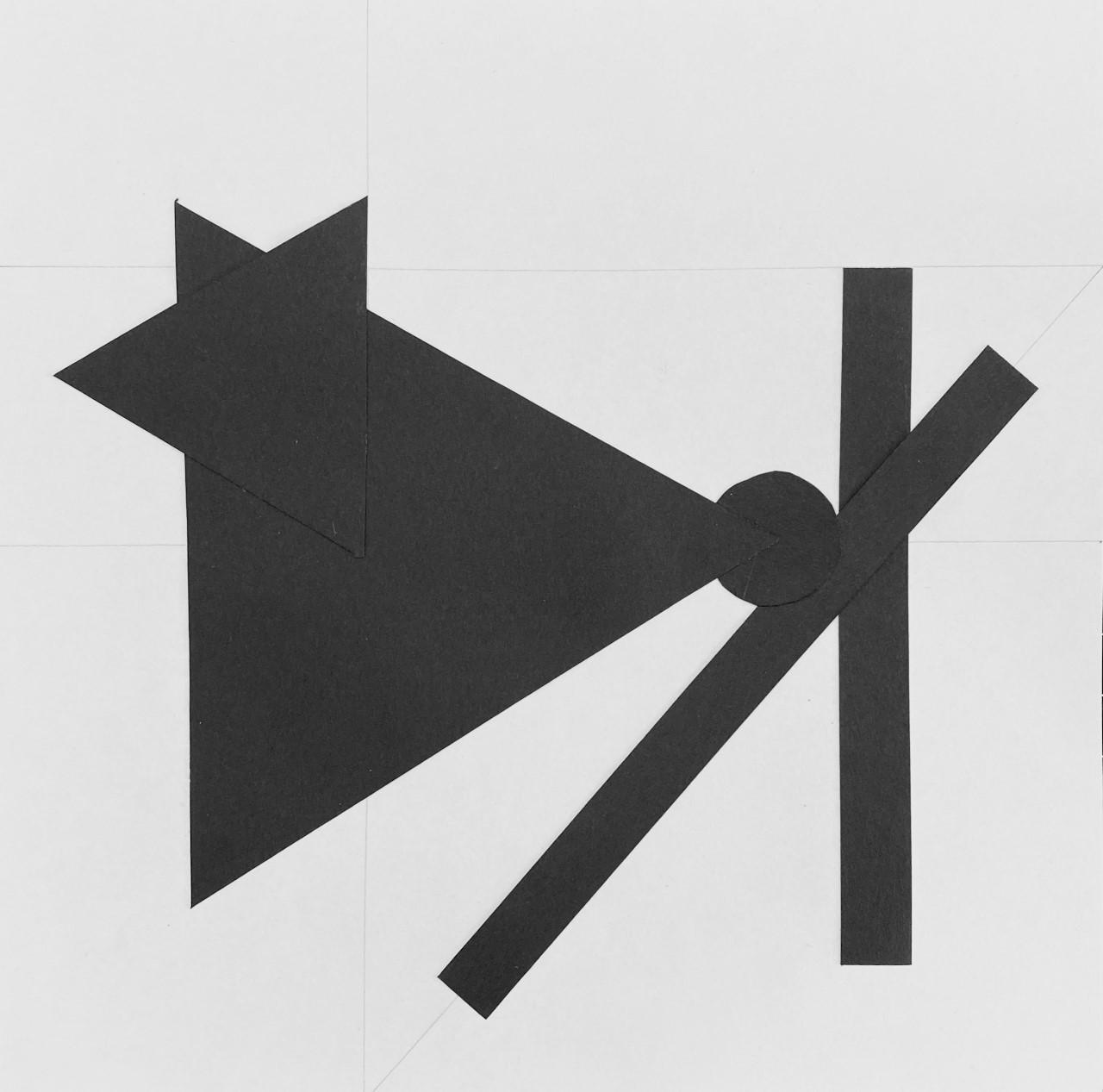
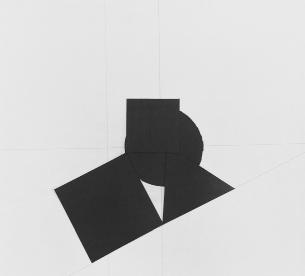
When proceeding through the exercise, rule sets were exchanged with peers, adding a layer of complexity, as we were prompted to interpret their operations in our own way.
